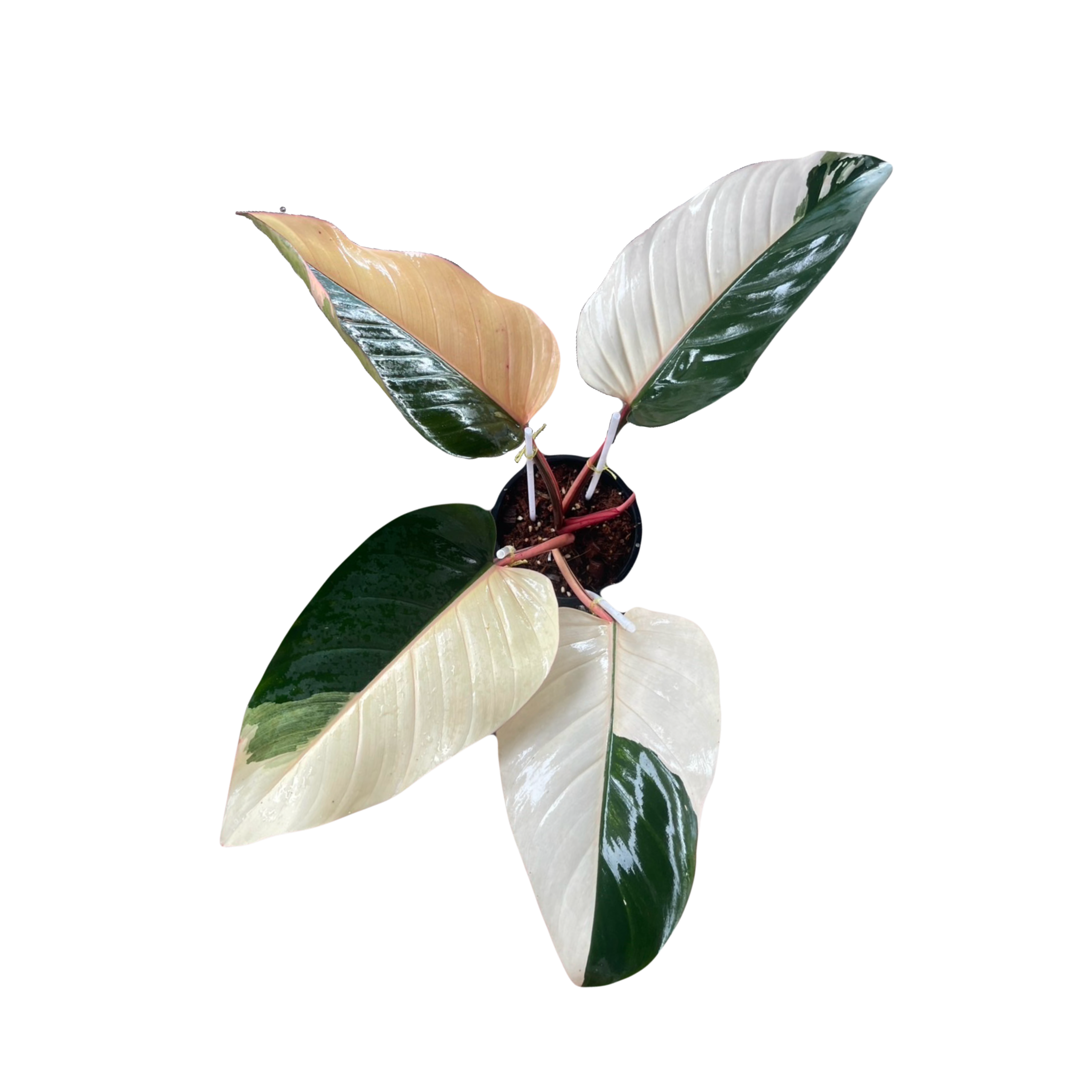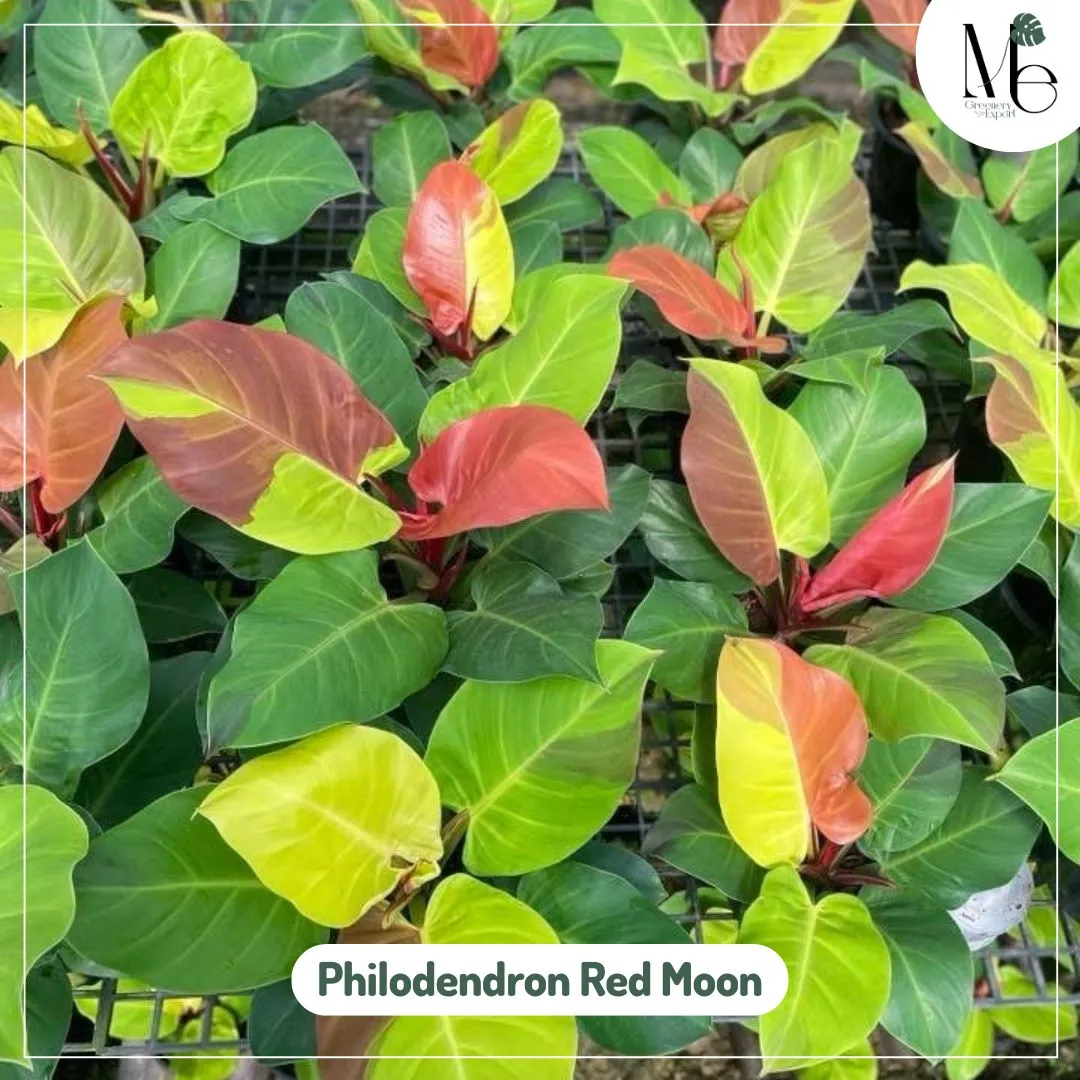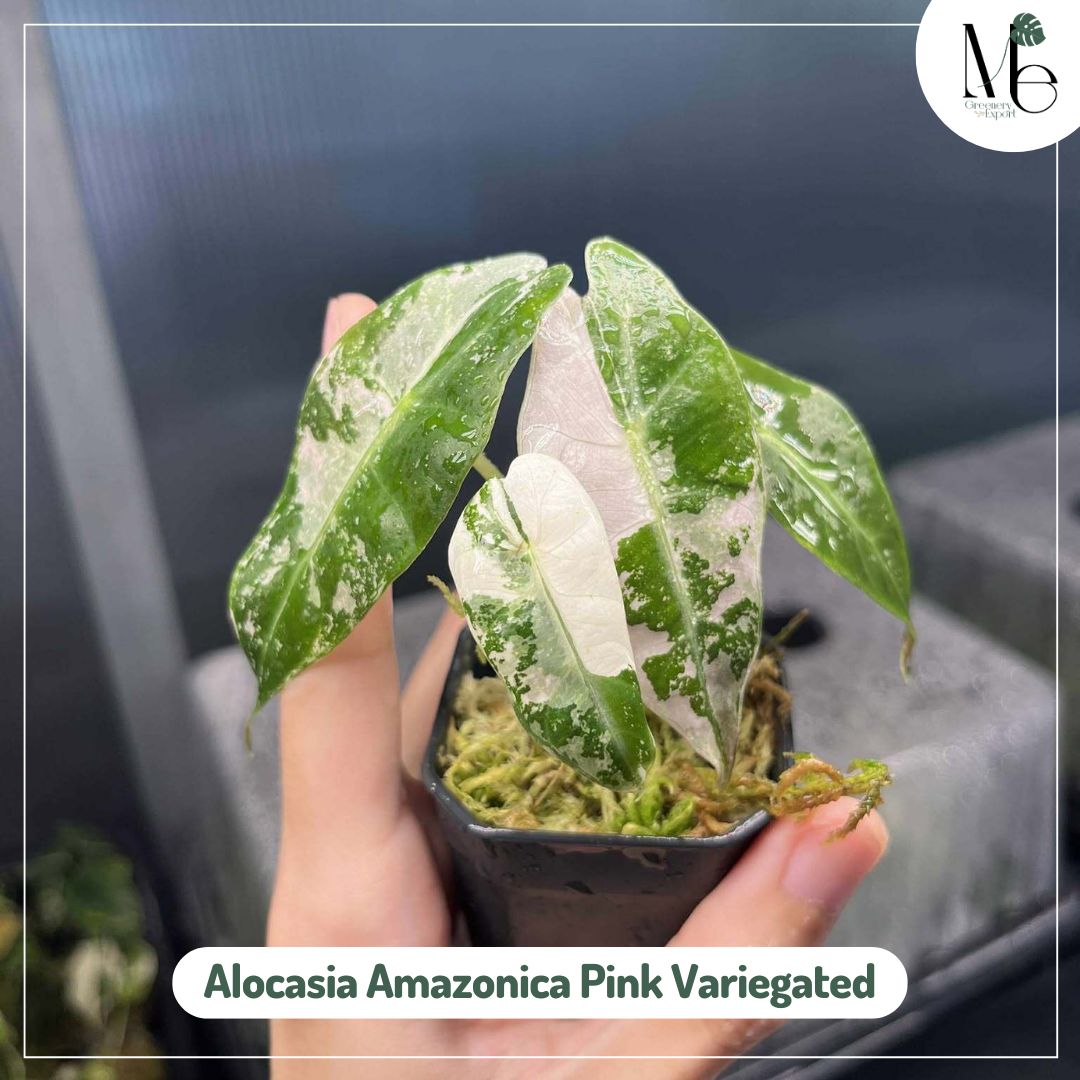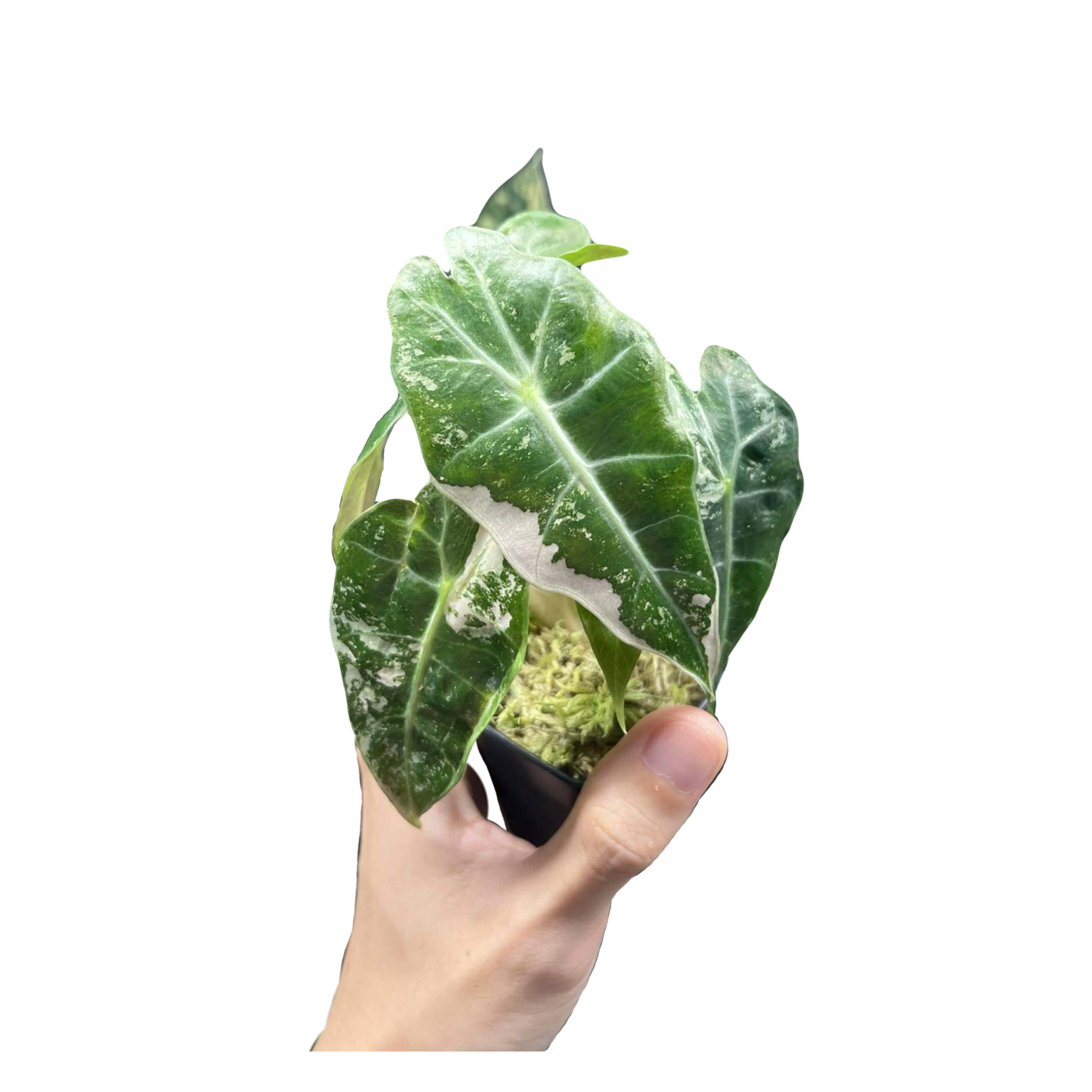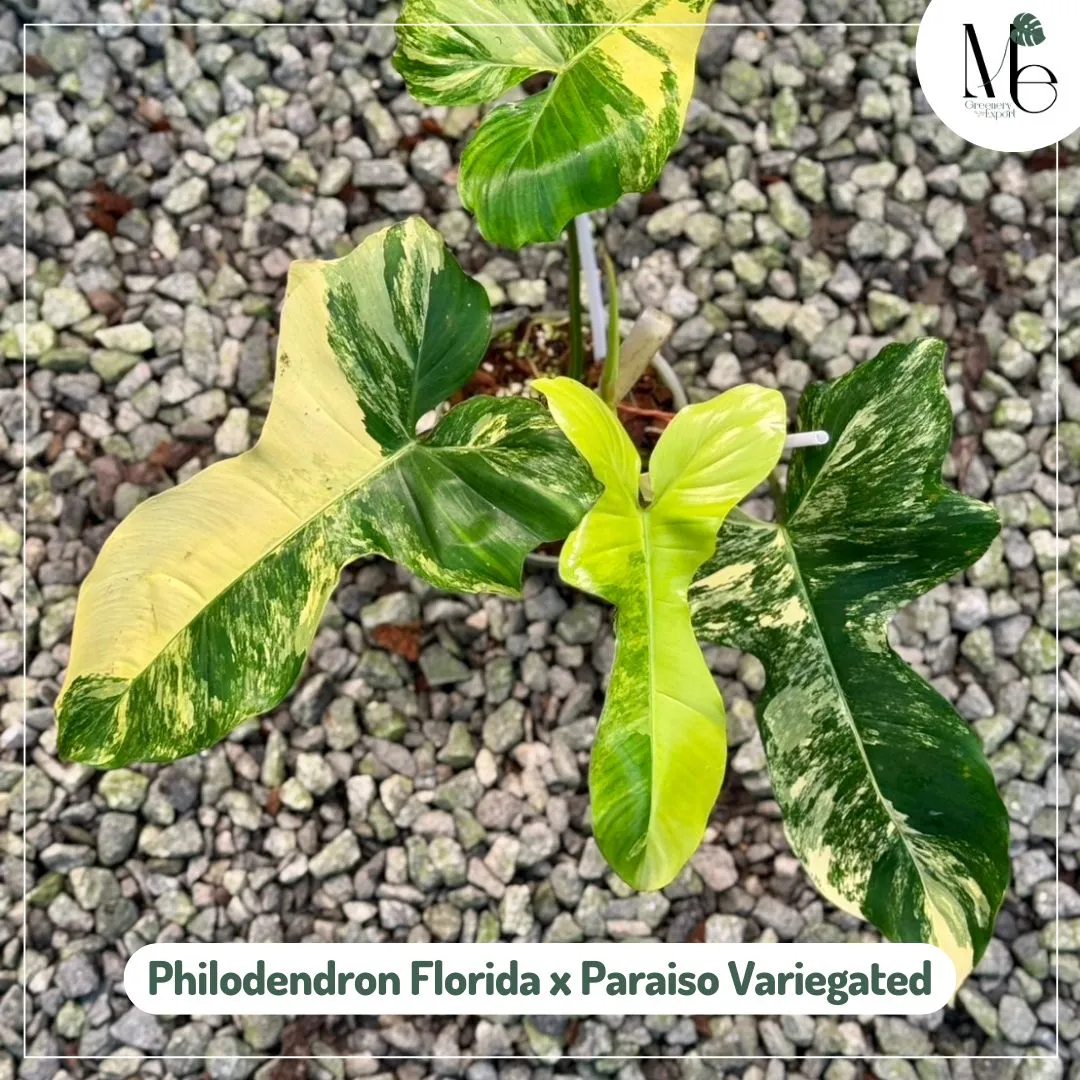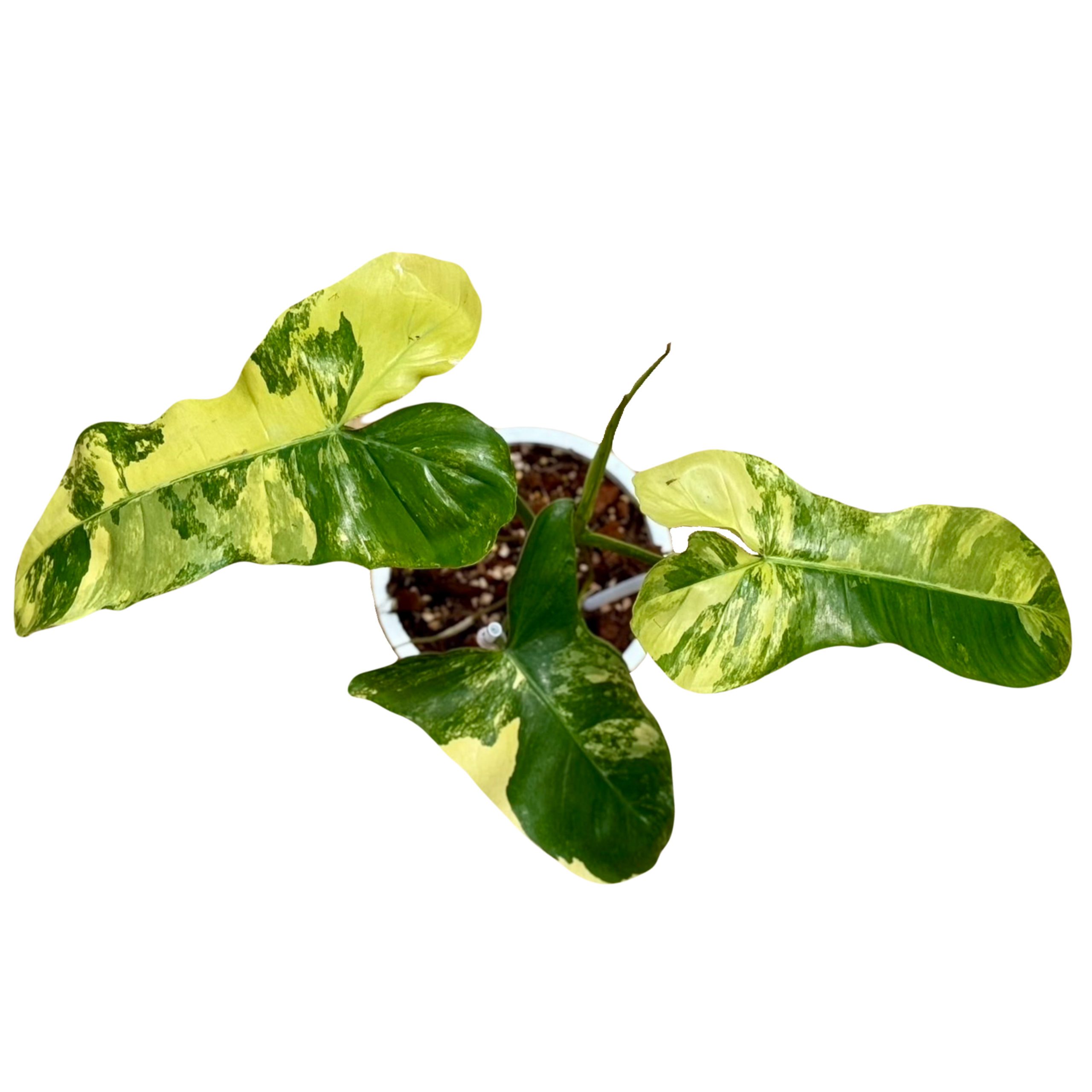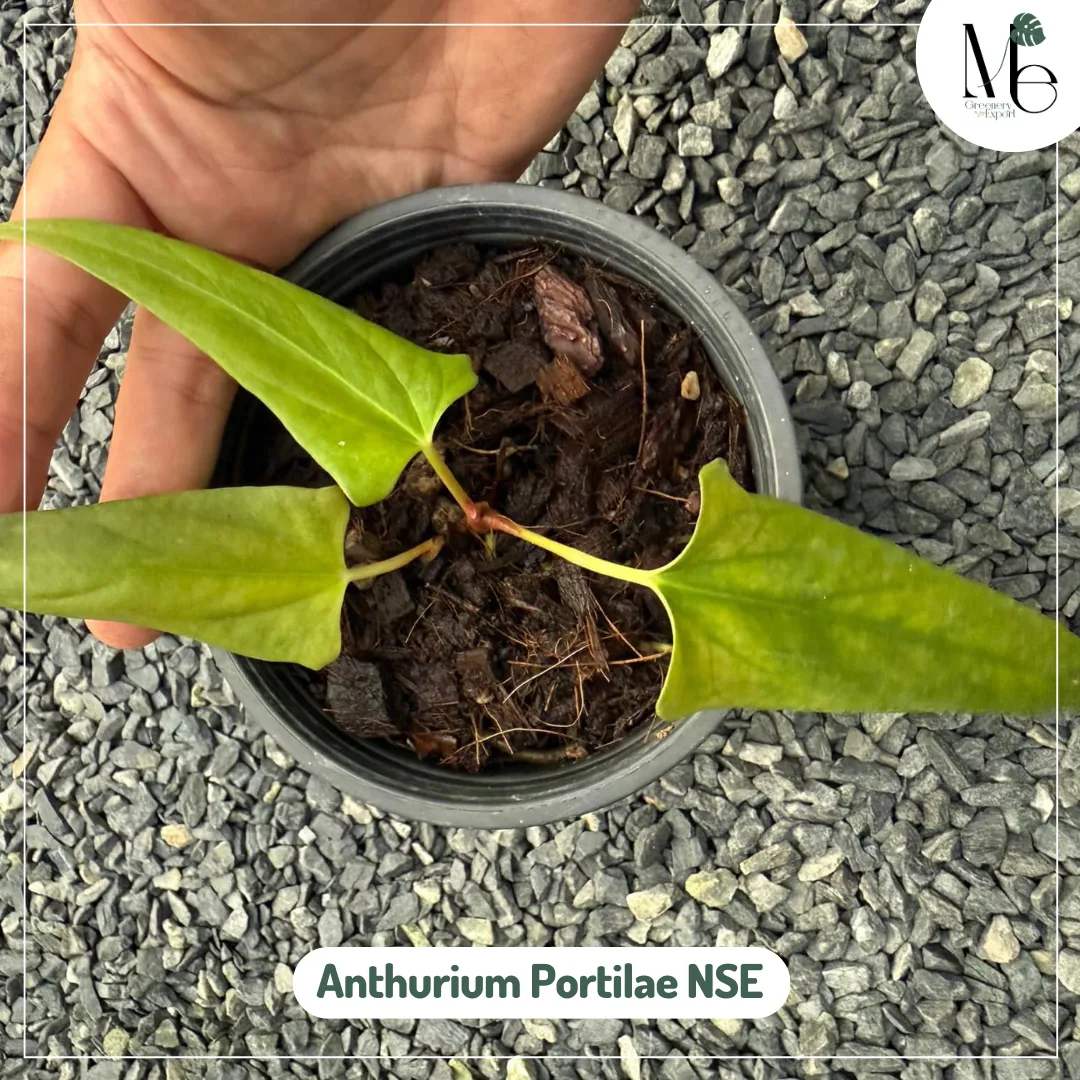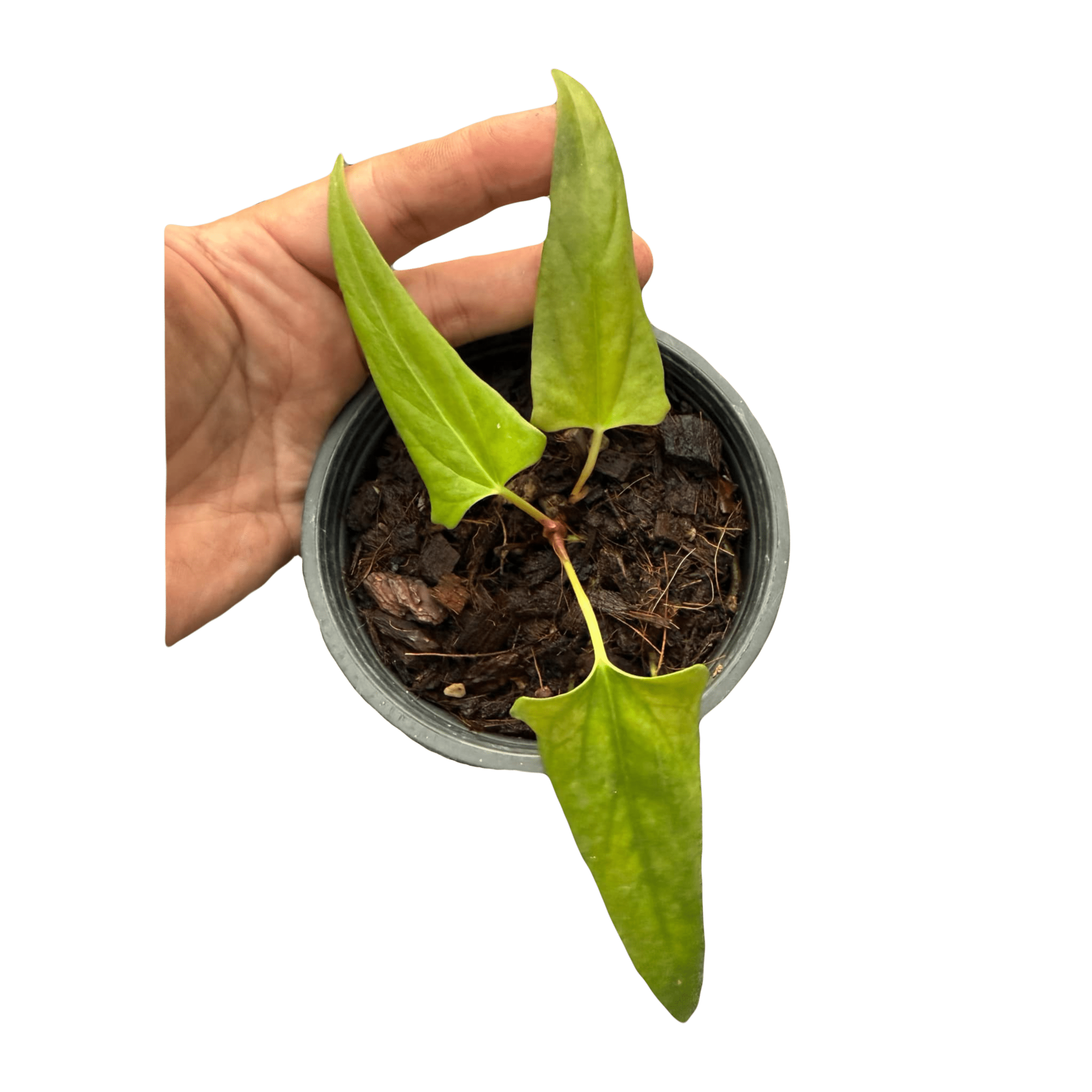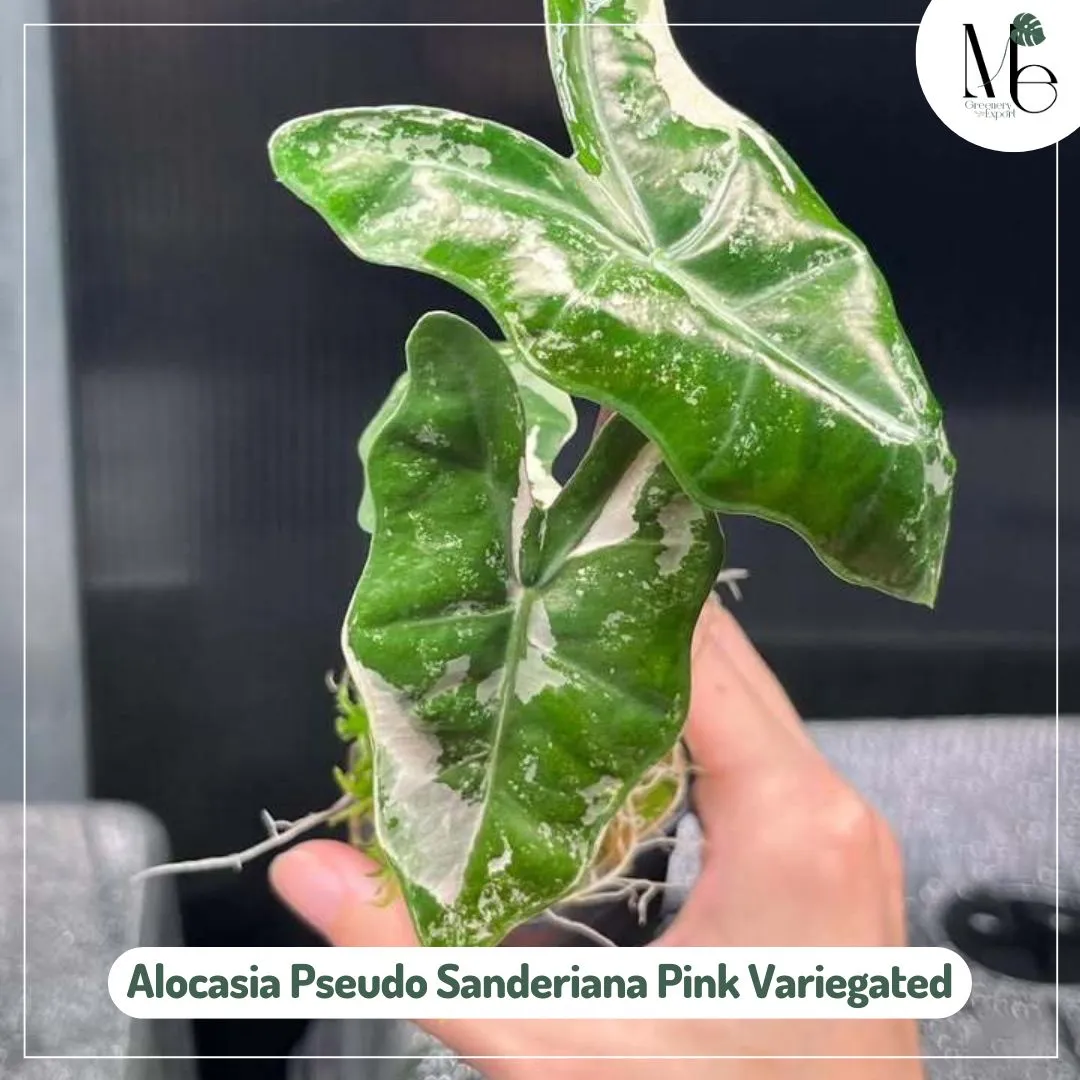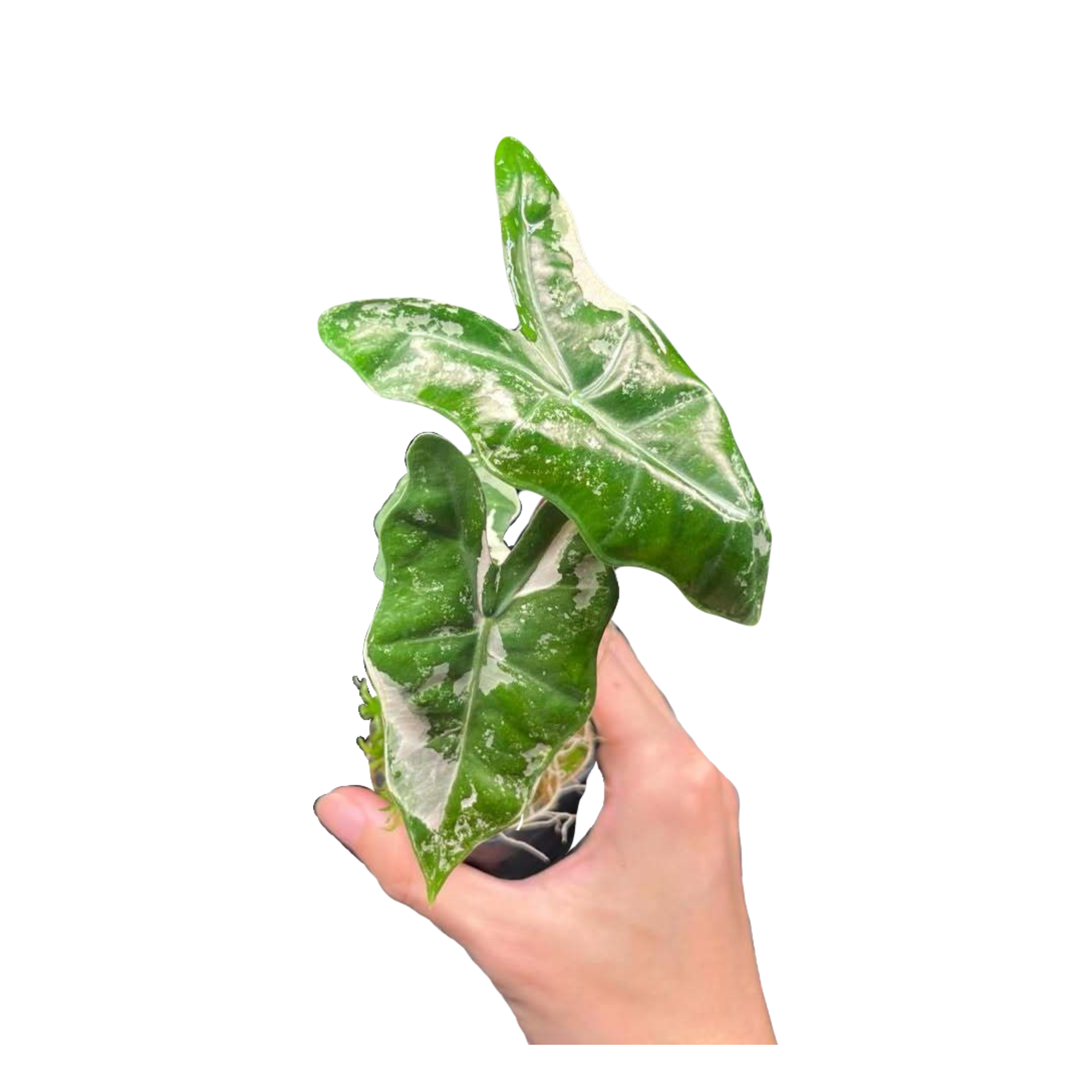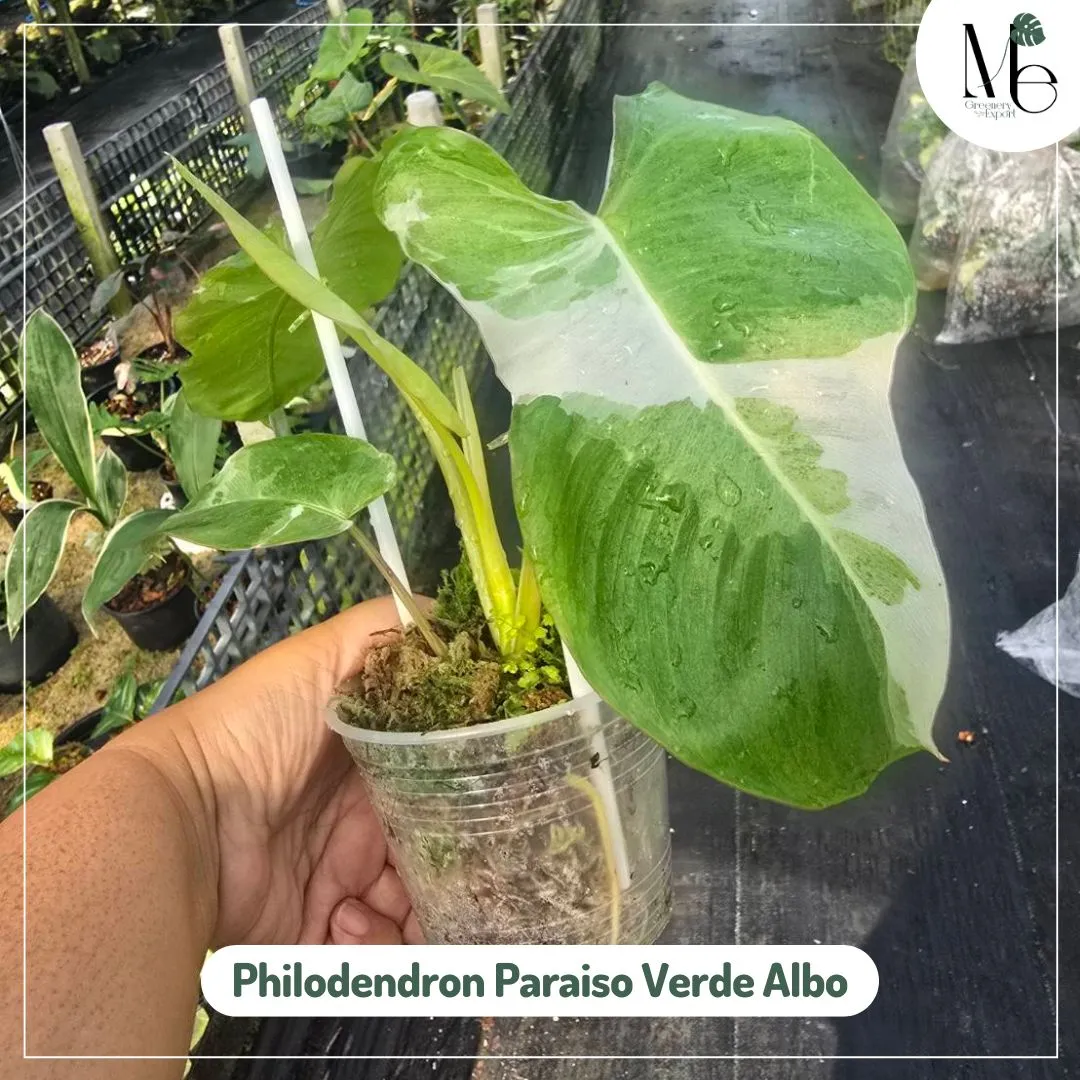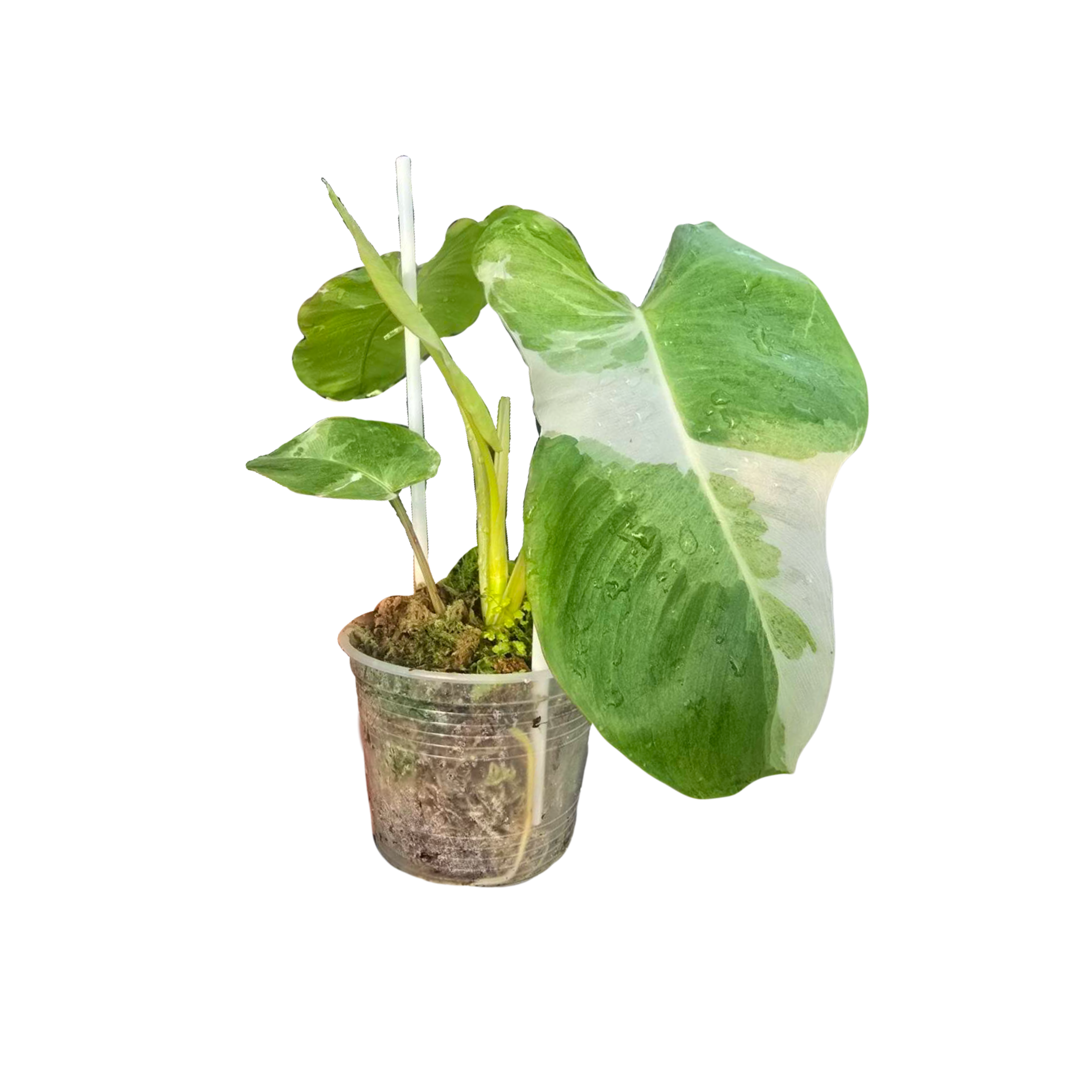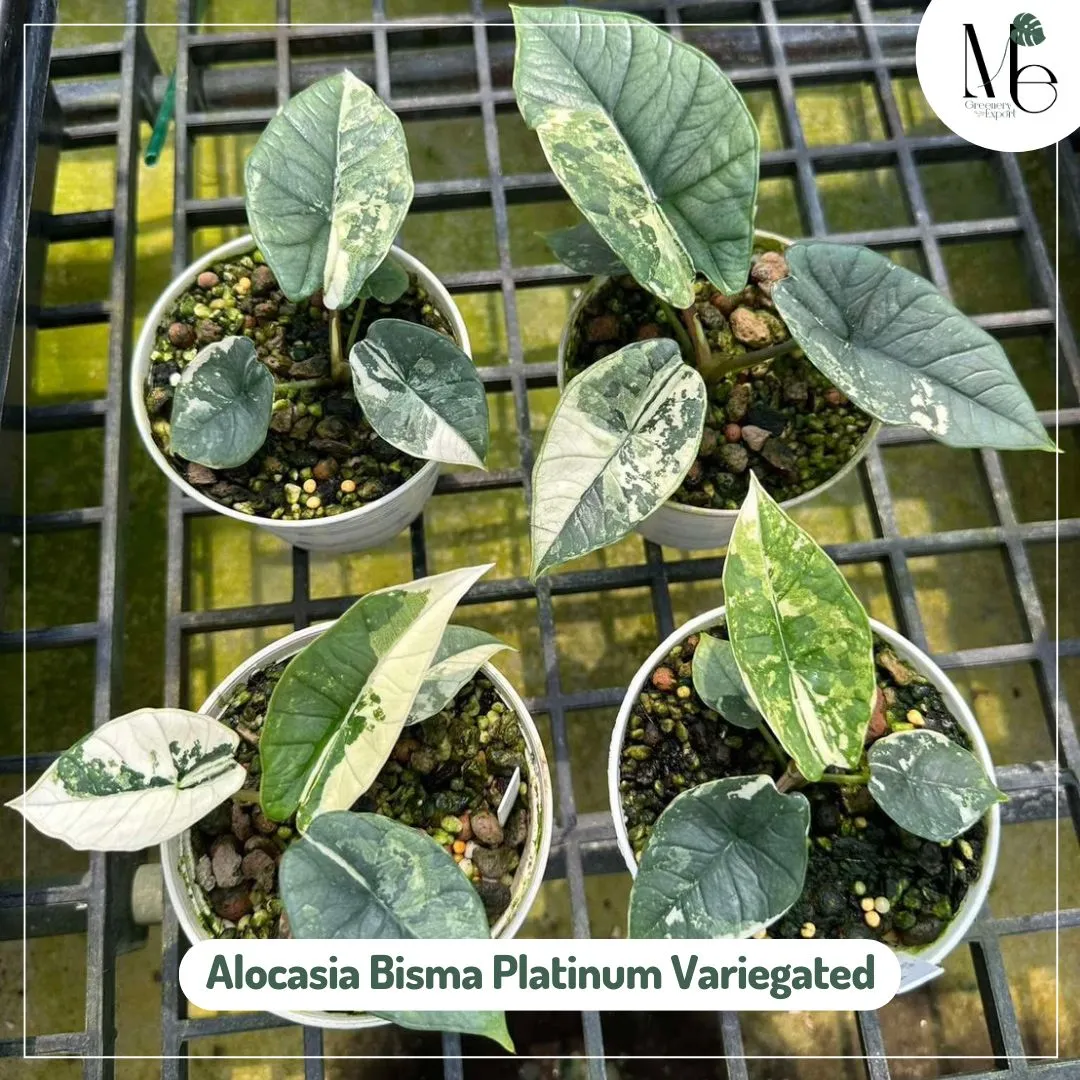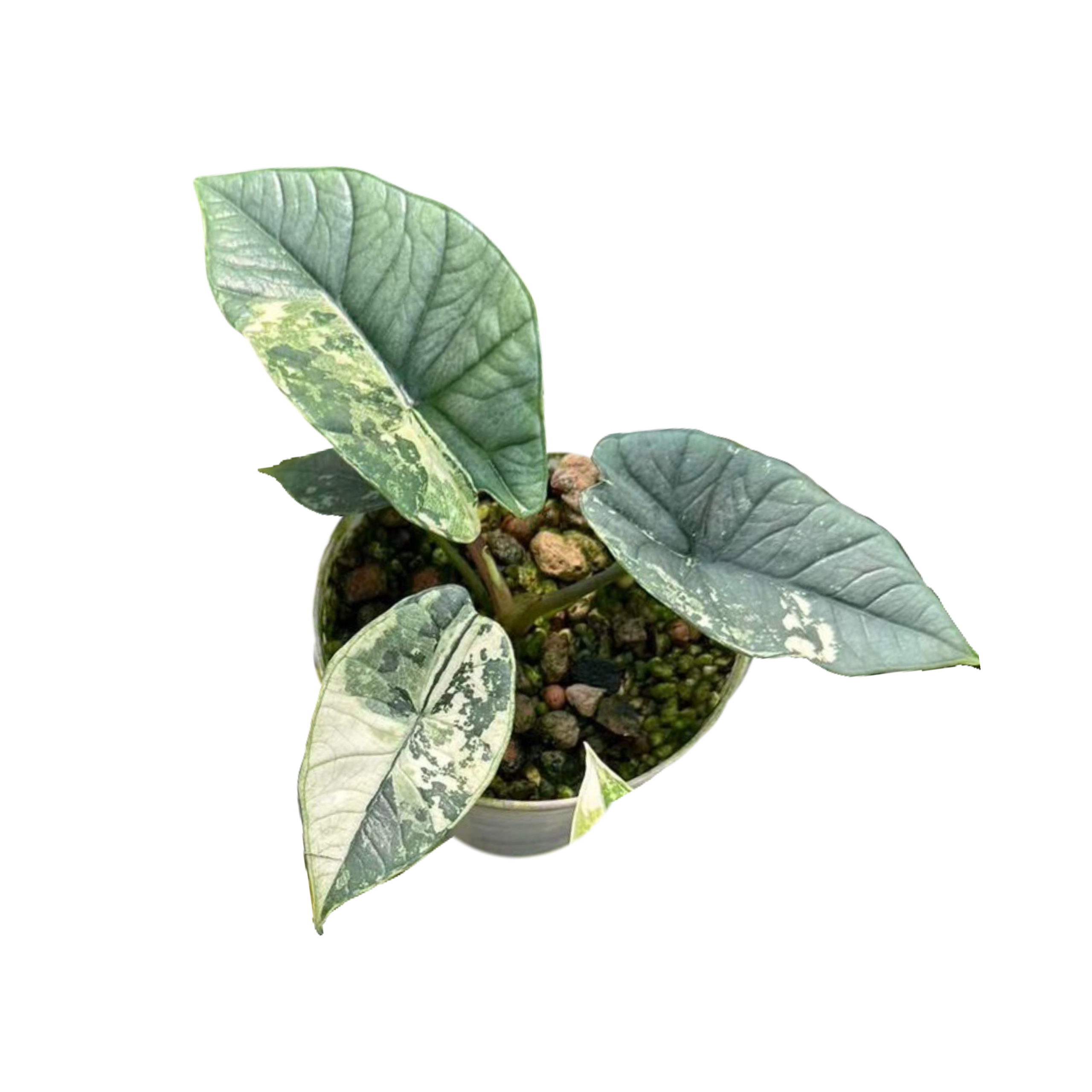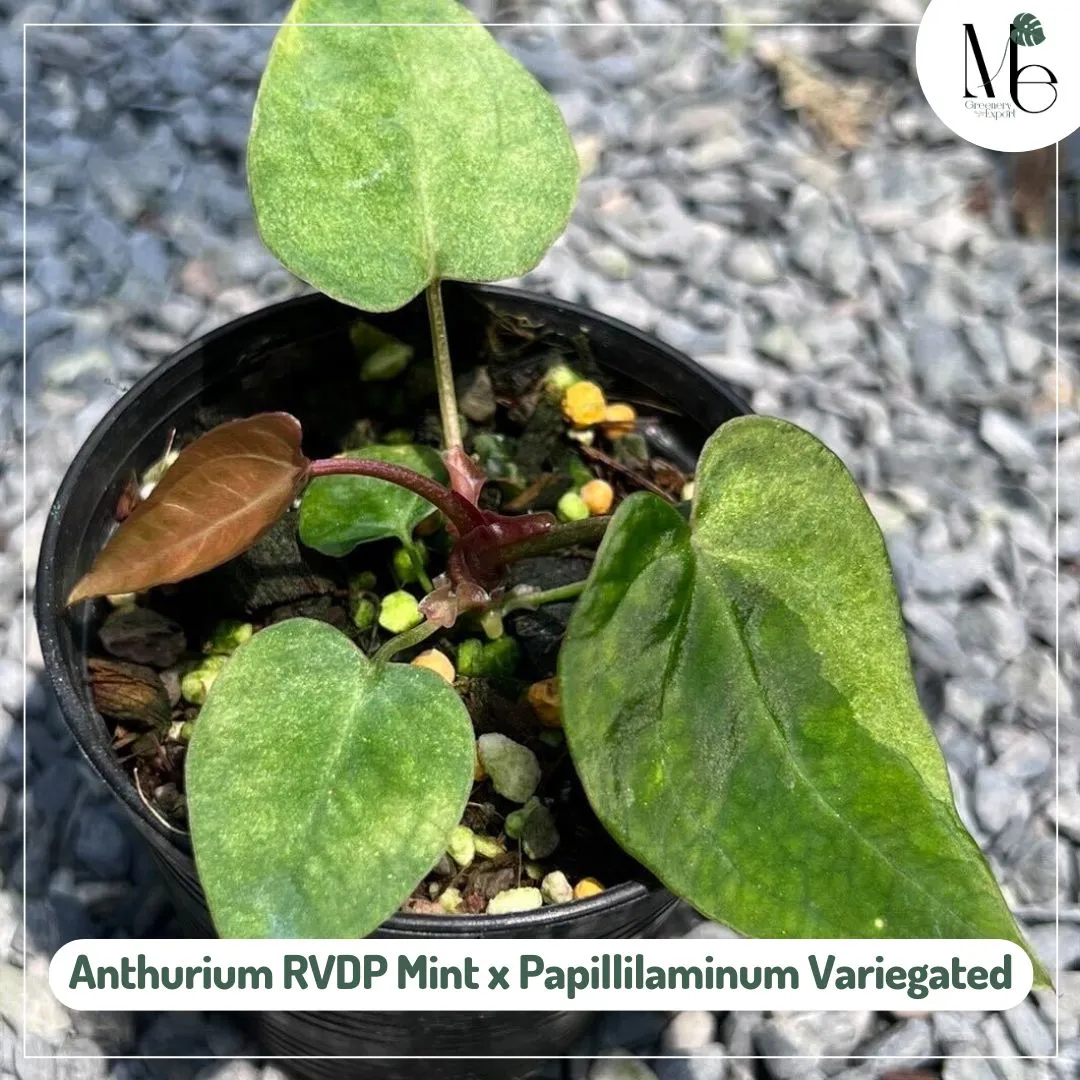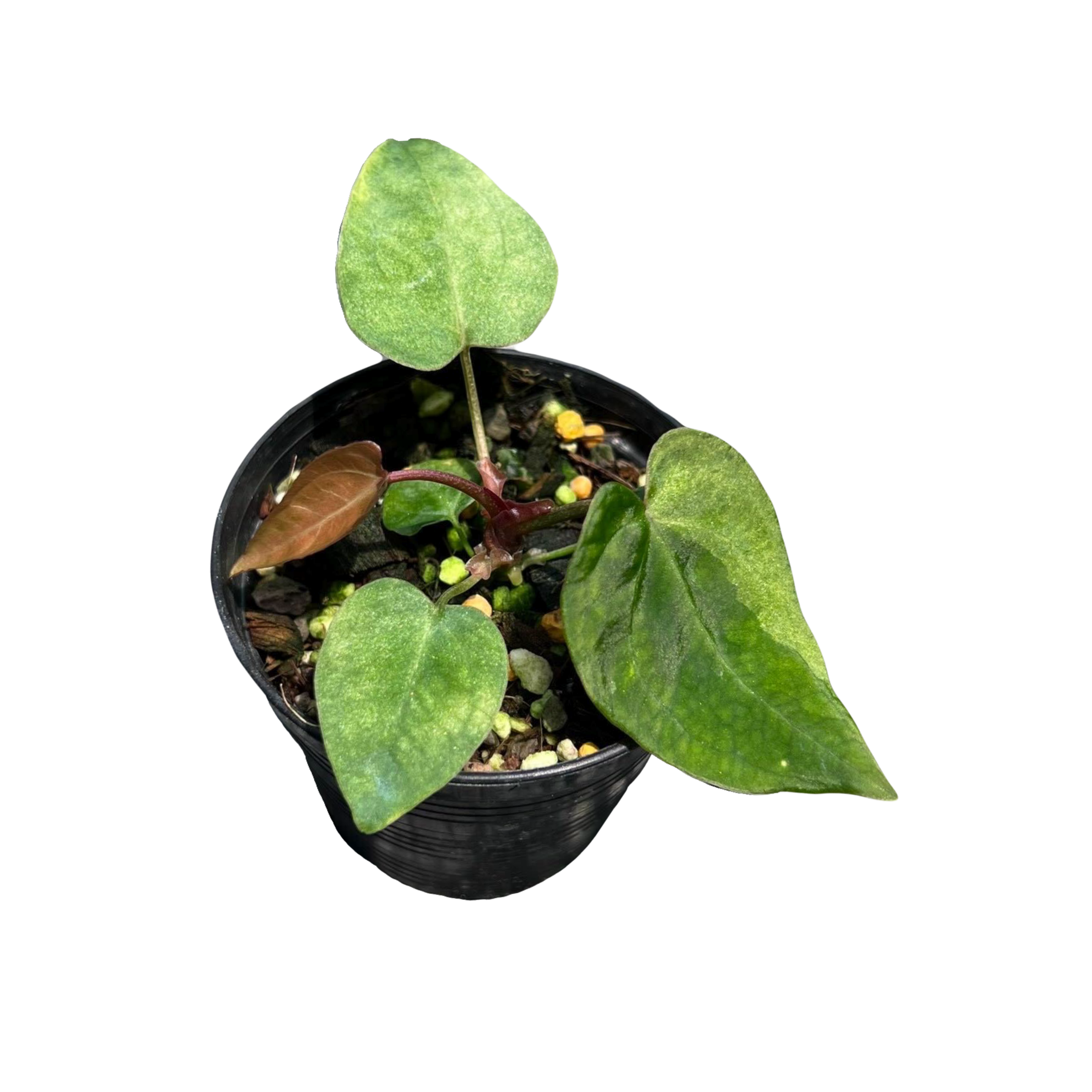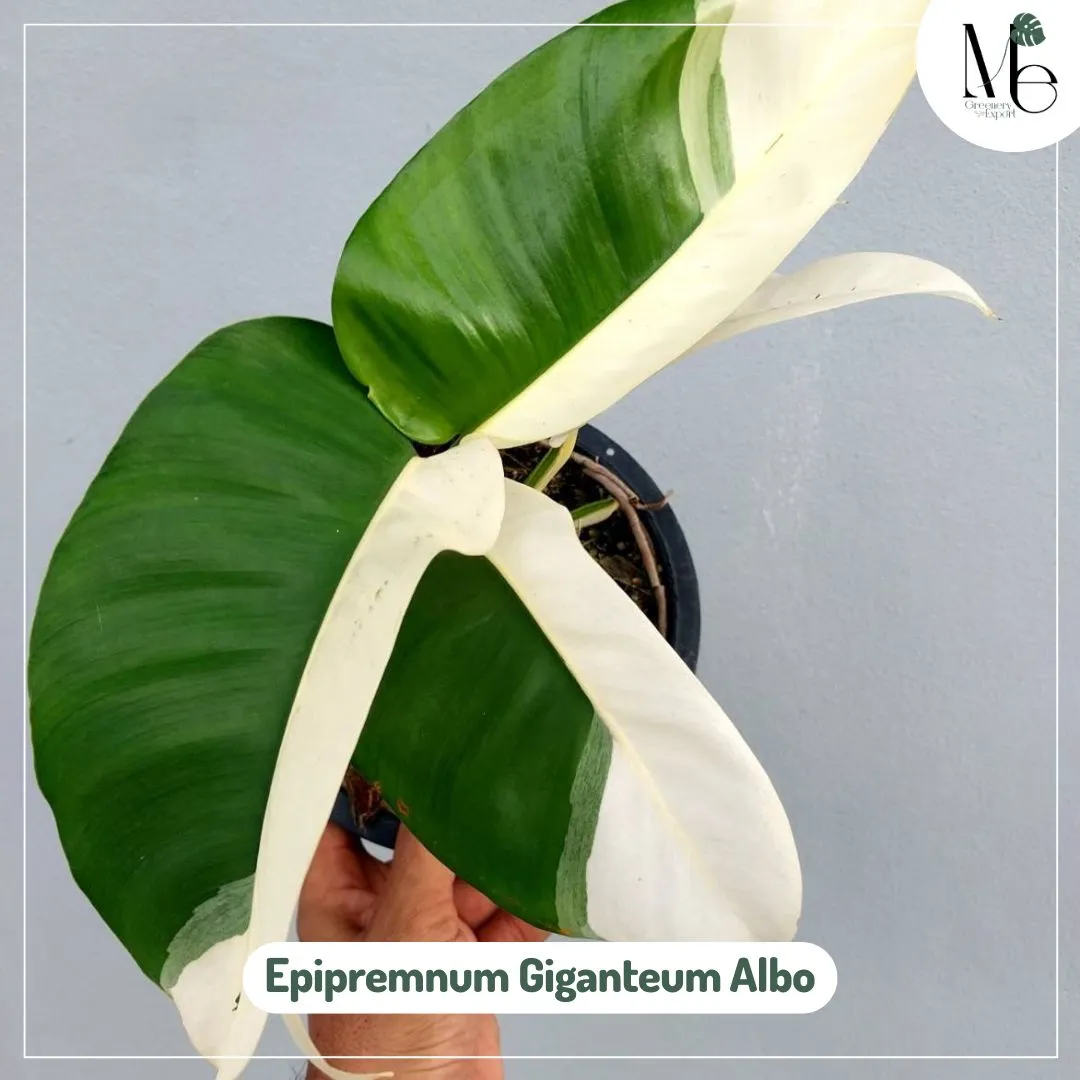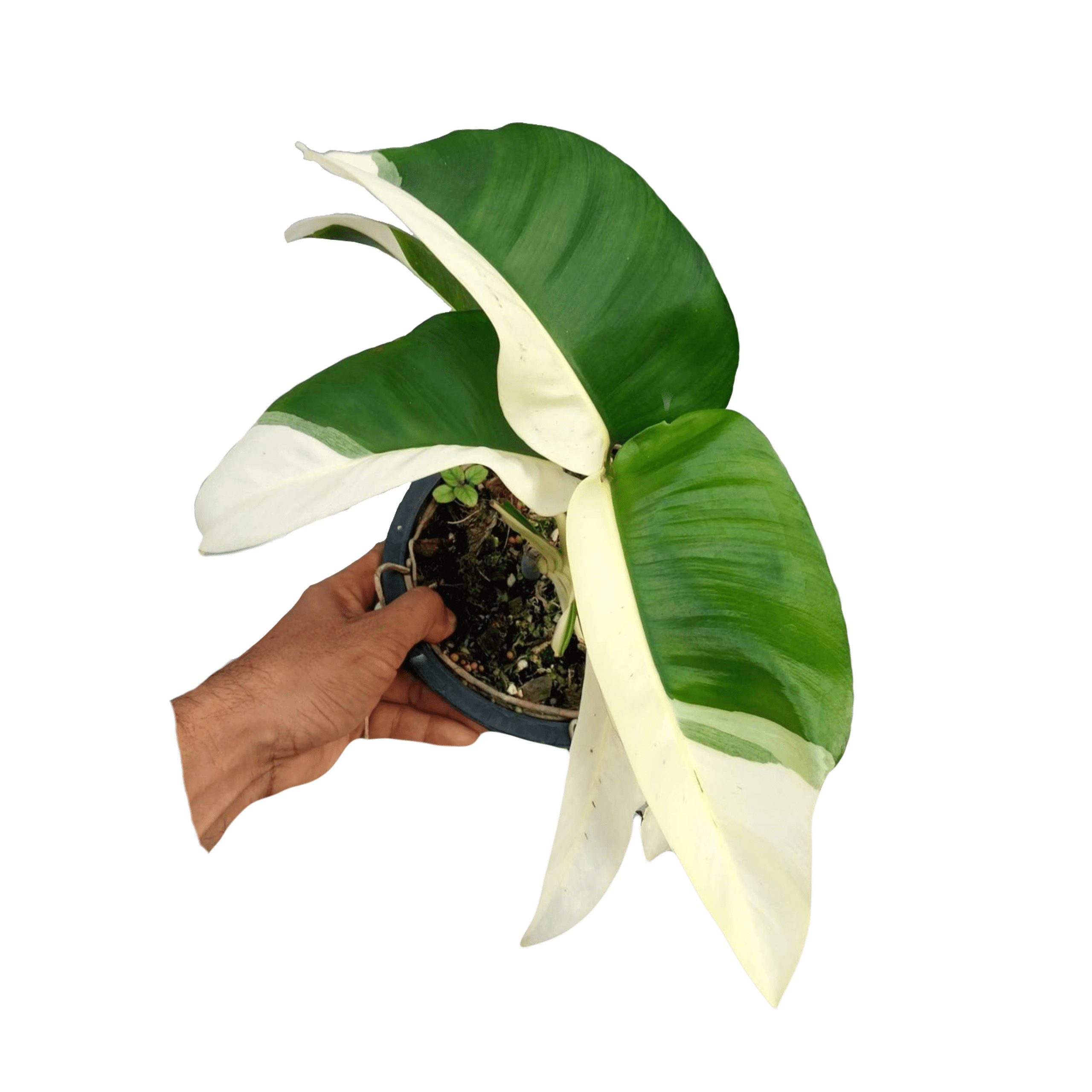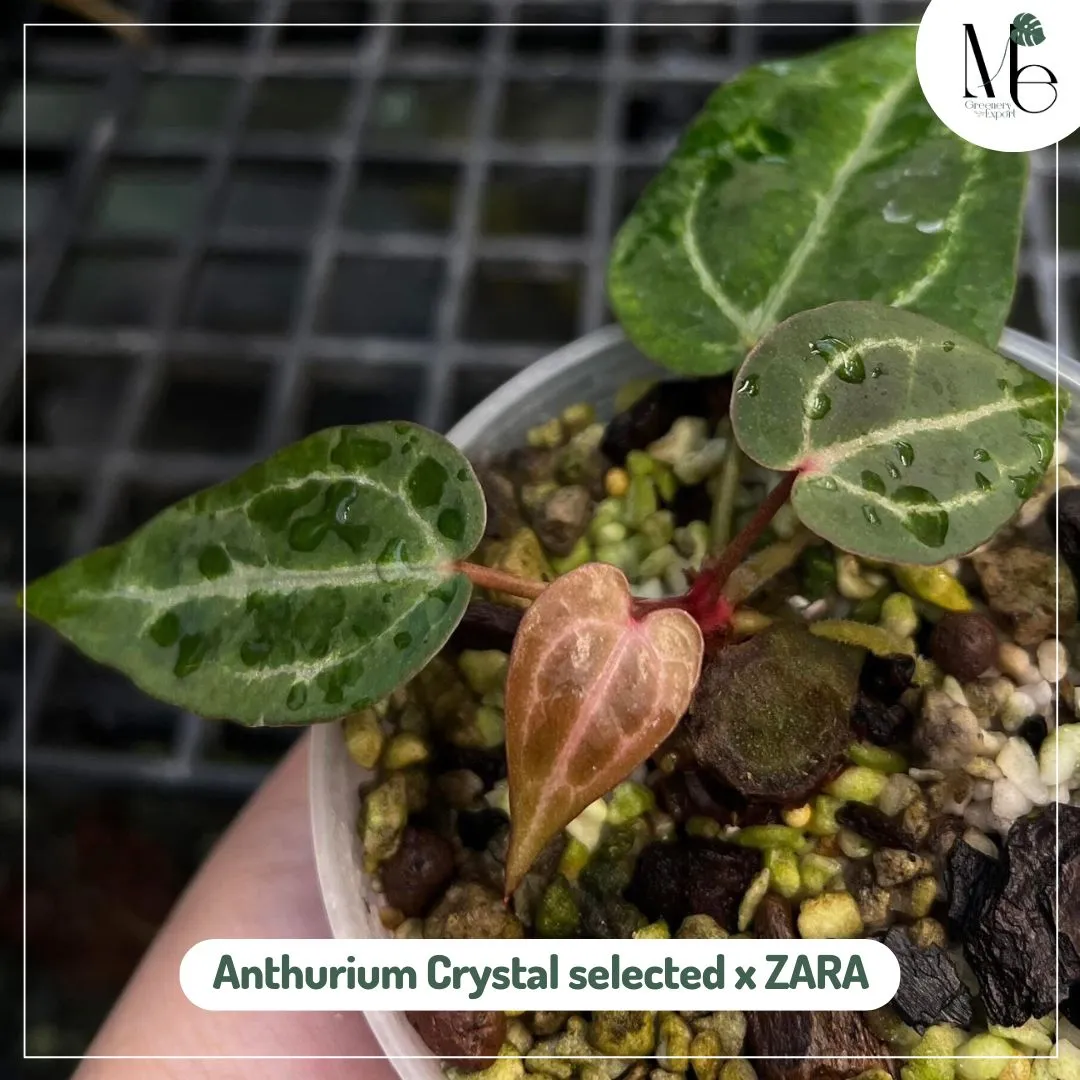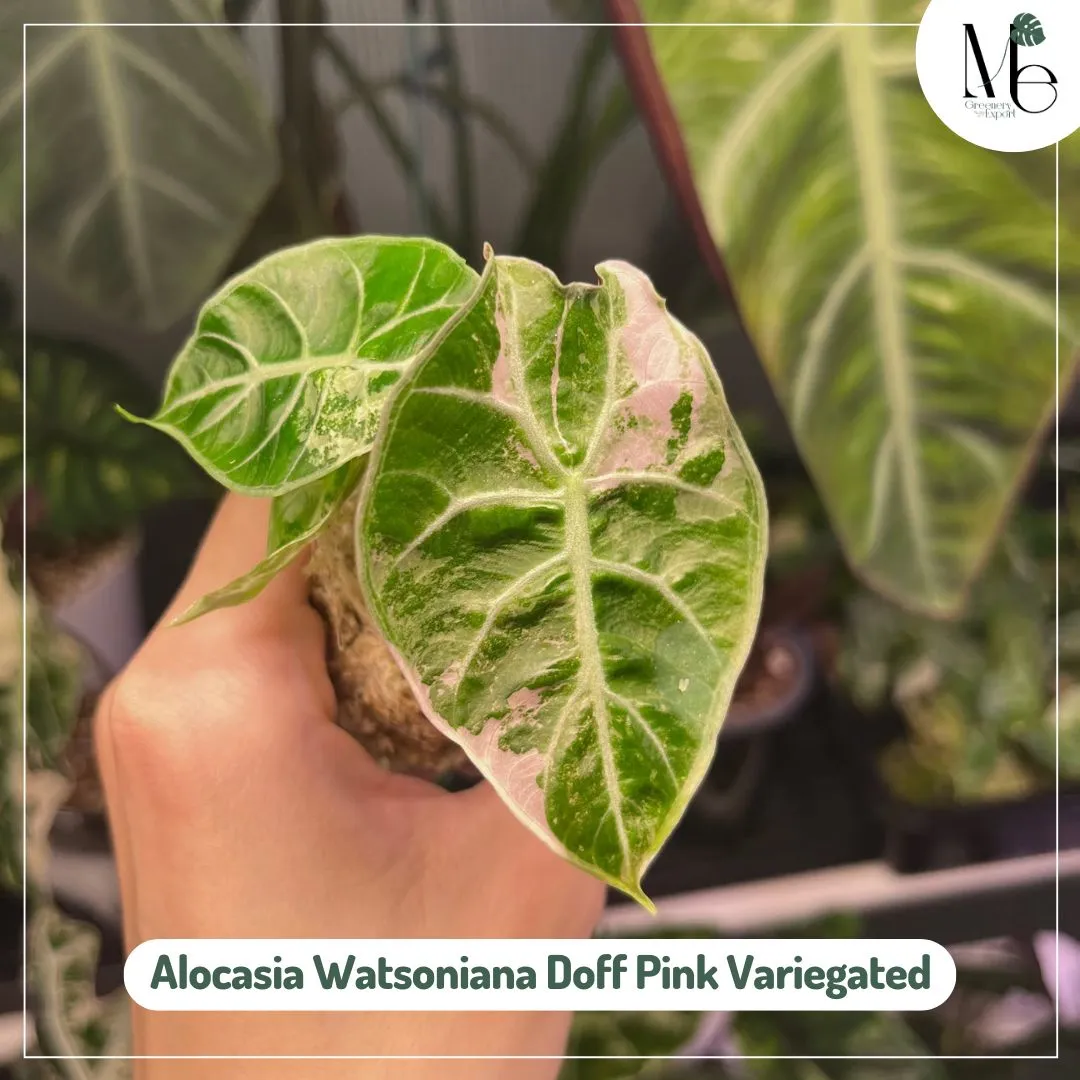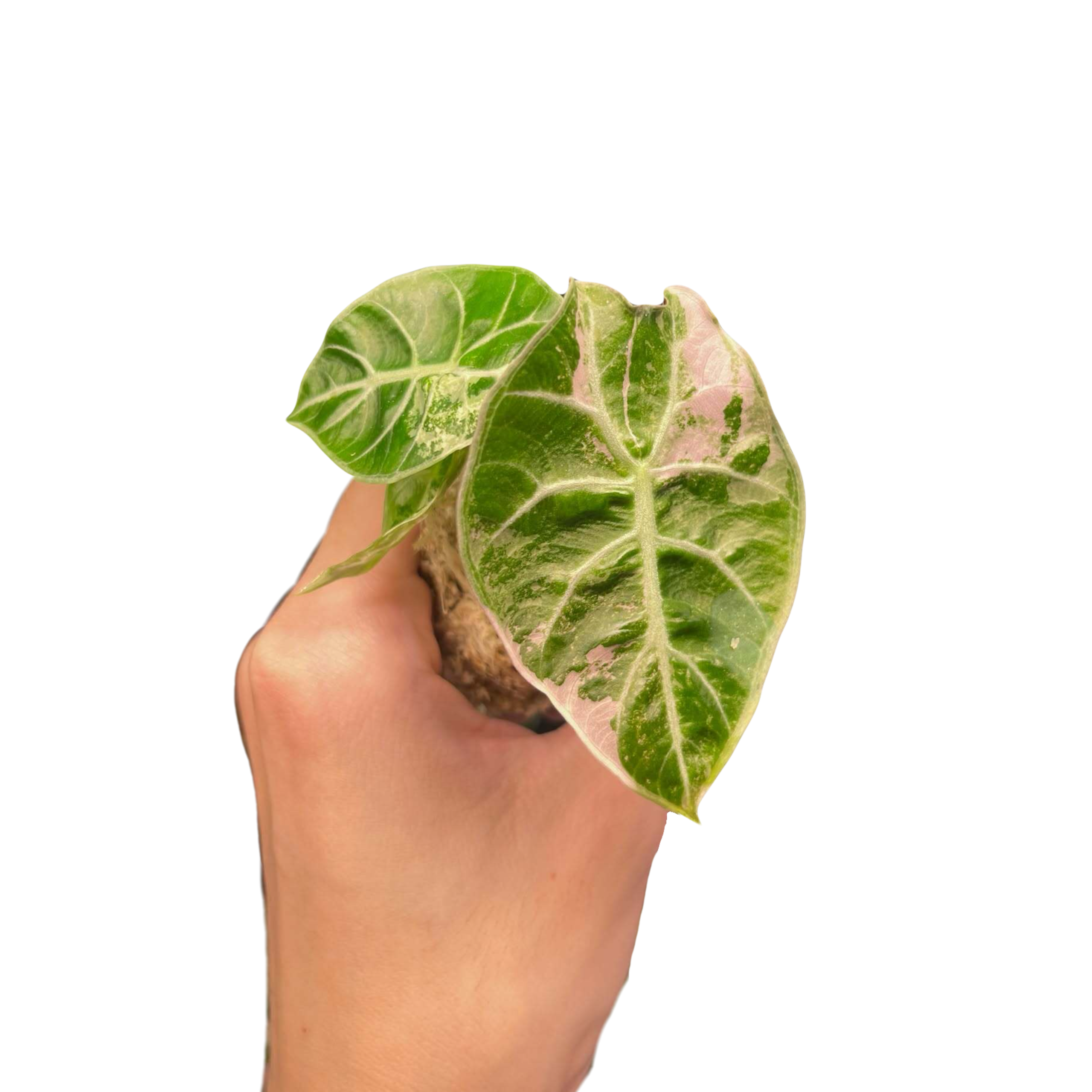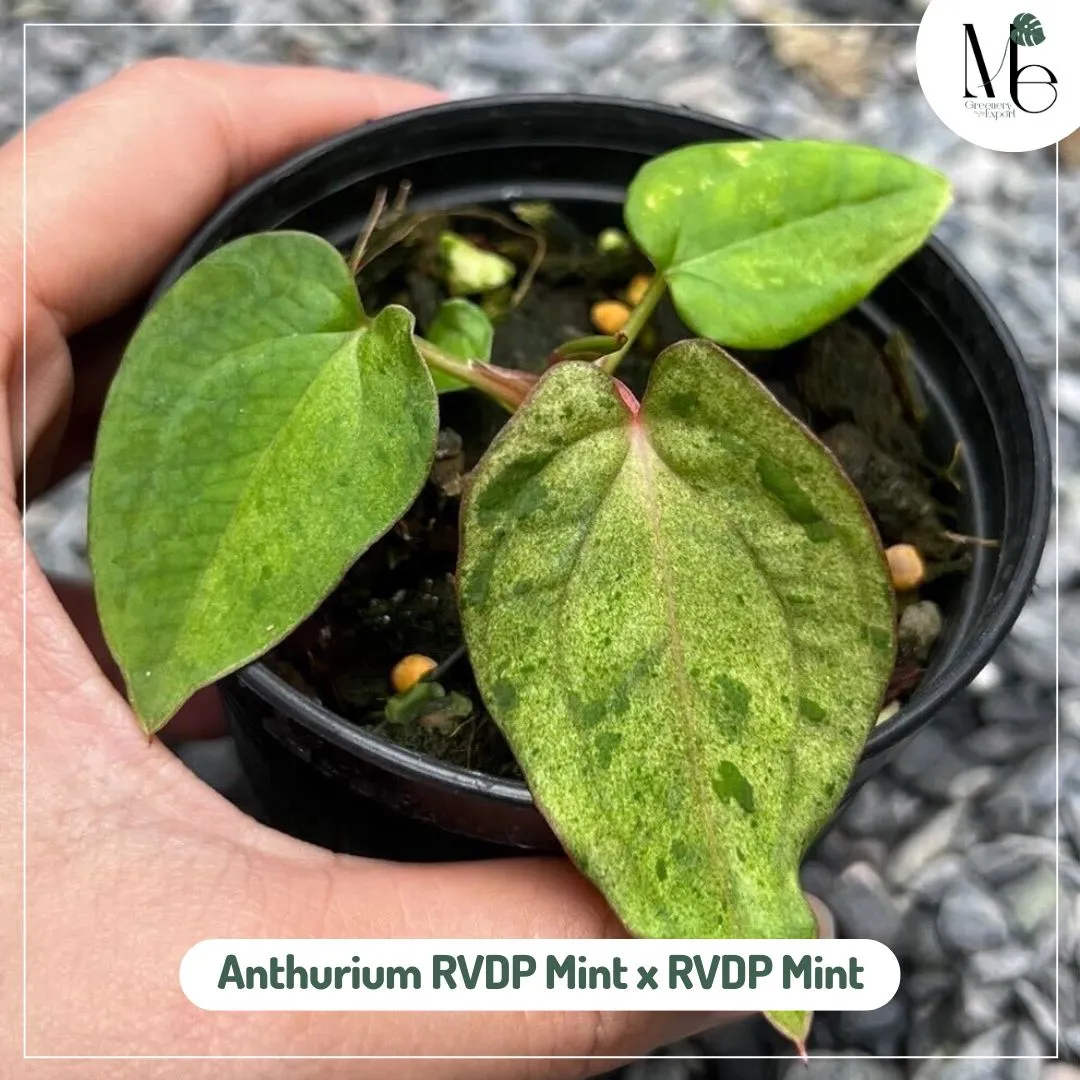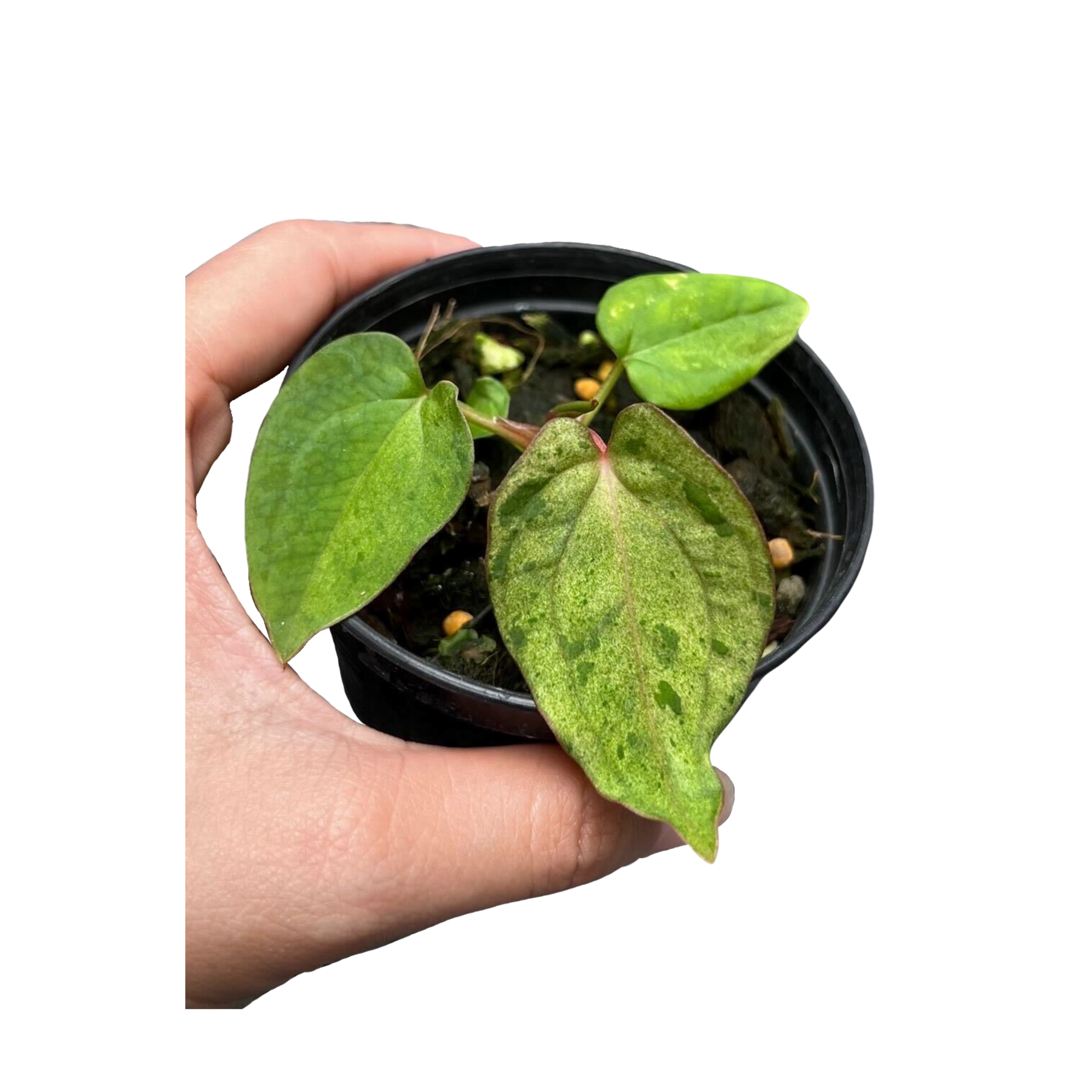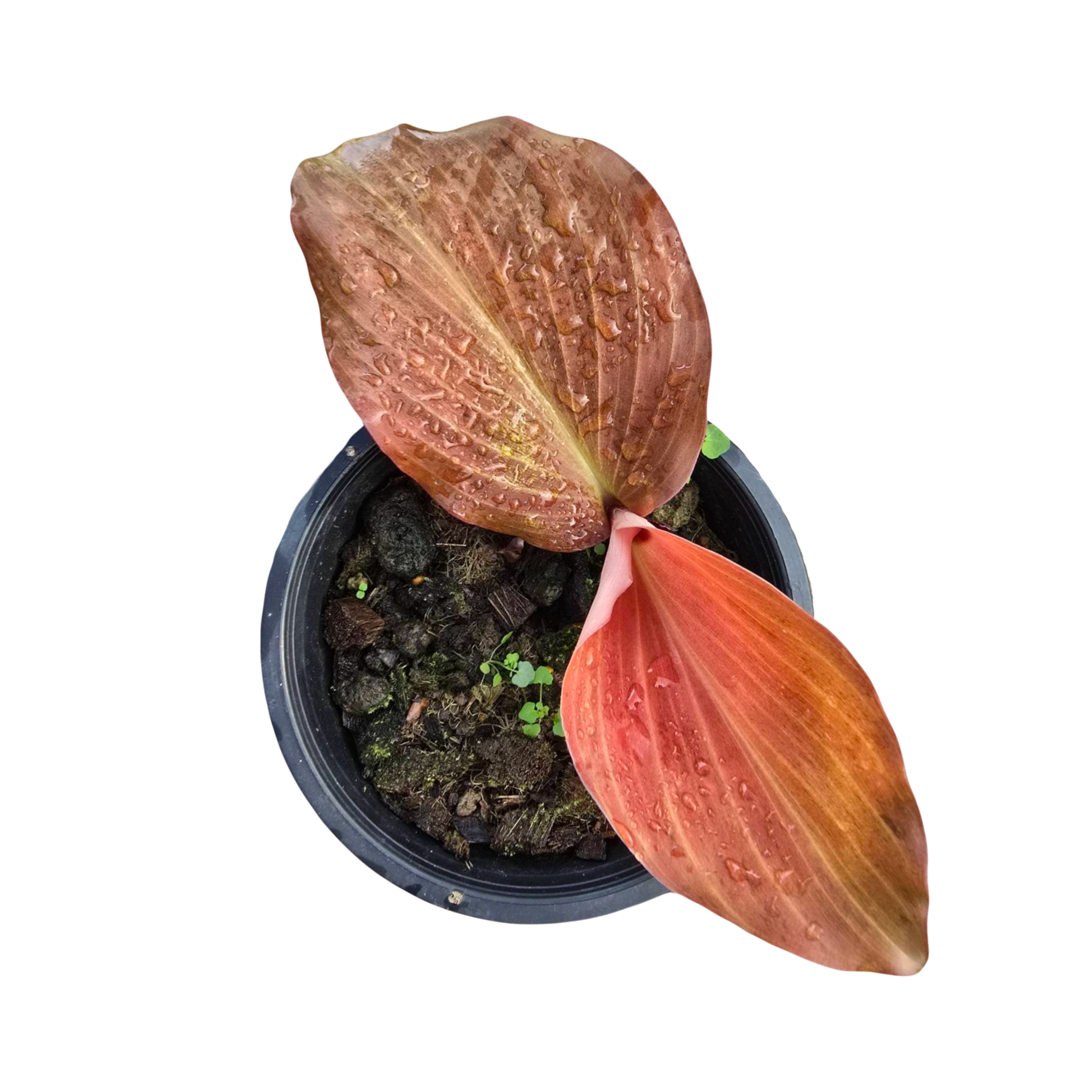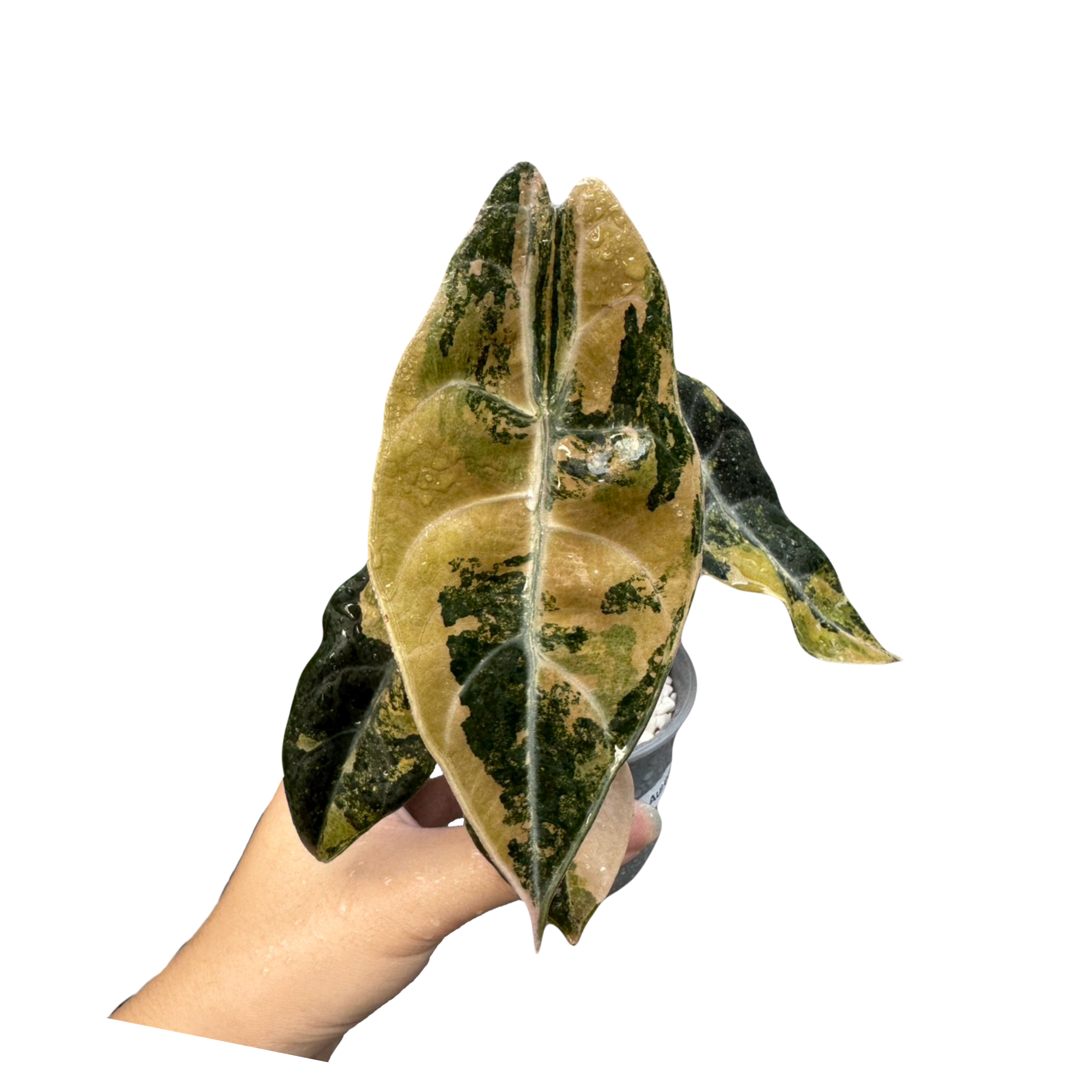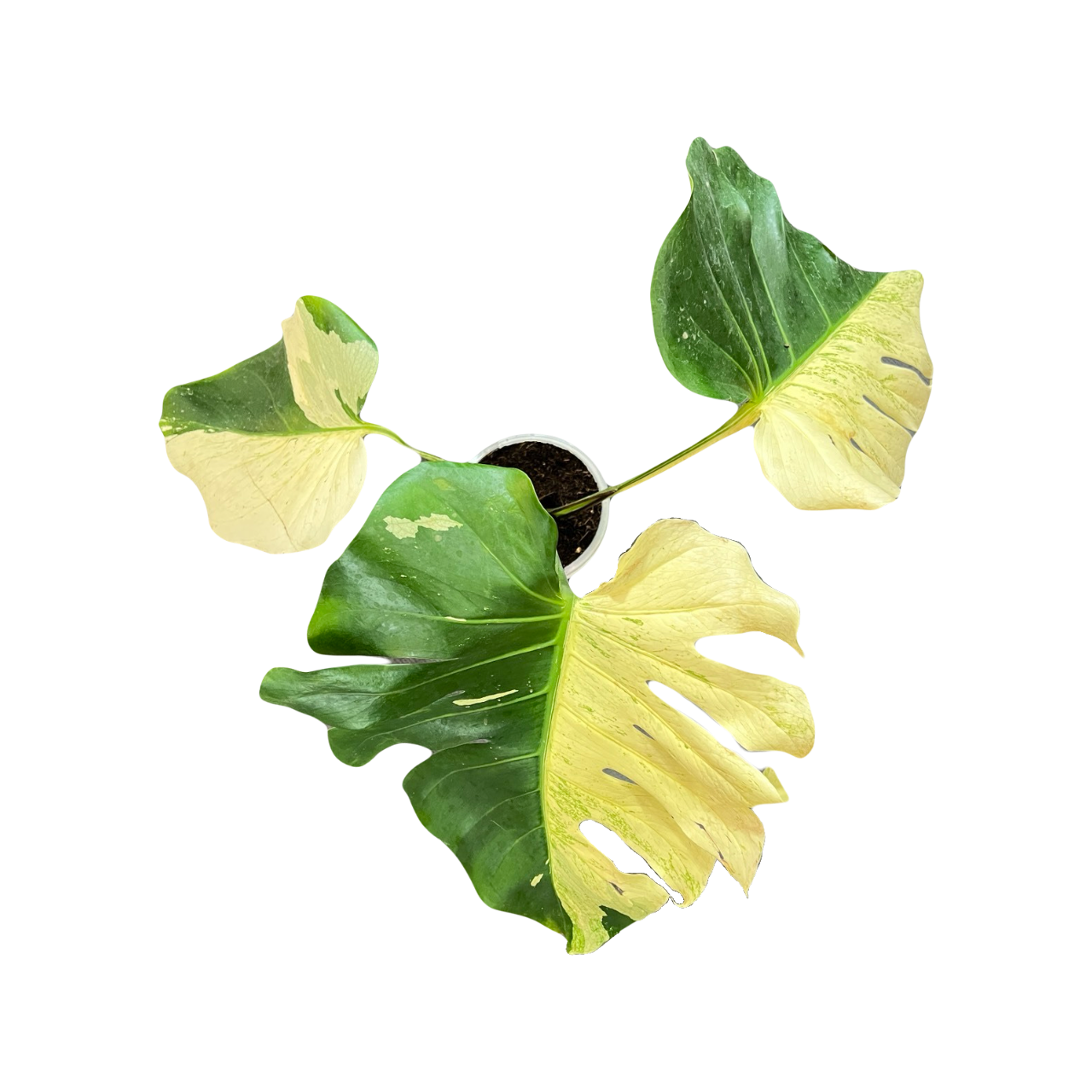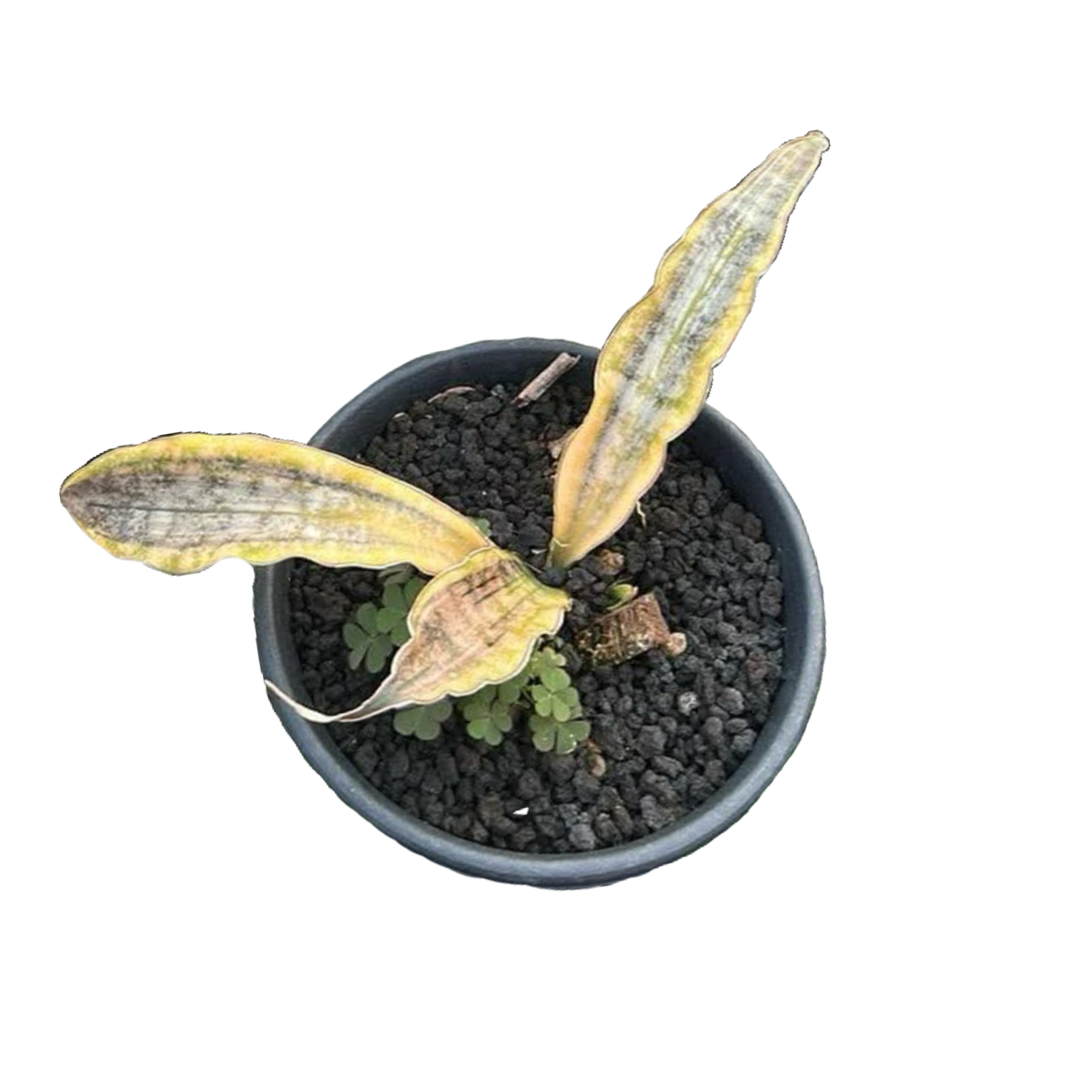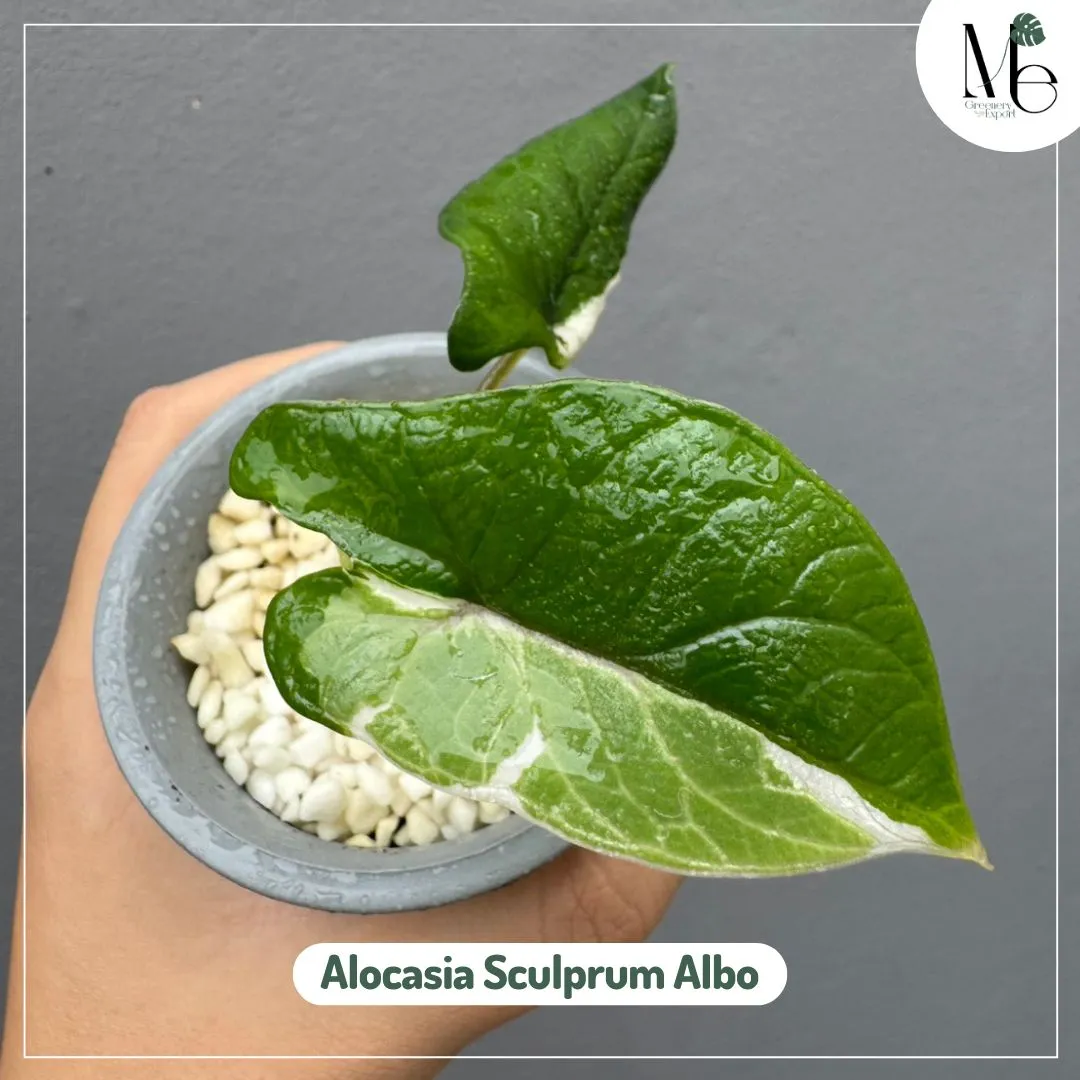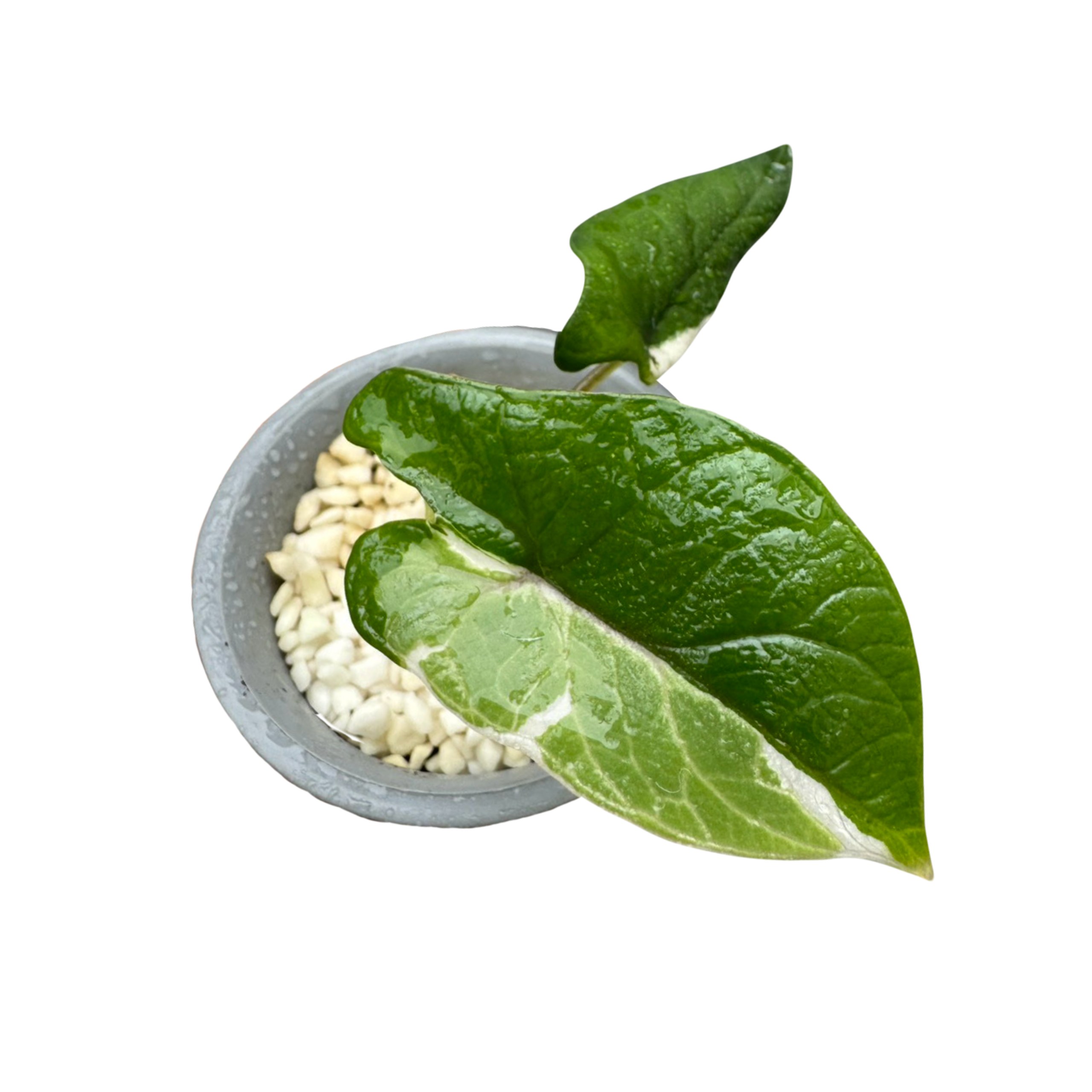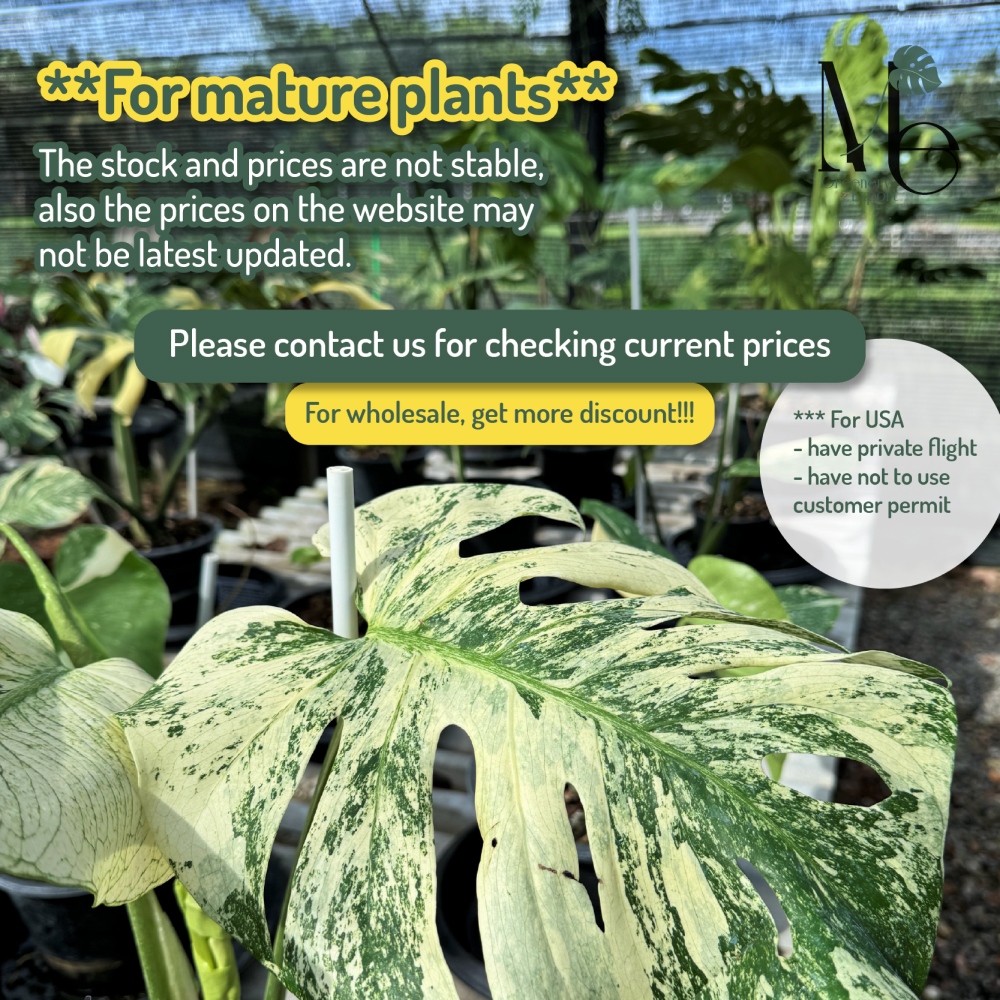Showing 1–20 of 270 resultsSorted by latest
Philodendron Red Congo Variegated
The Philodendron Red Congo Variegated is a stunning tropical plant prized for its large, glossy leaves that blend deep burgundy-red hues with striking variegation. Each leaf showcases rich, wine-red tones contrasted by irregular splashes or patches of creamy white and soft pink variegation, making it a truly unique and dynamic specimen. Its upright, robust growth habit adds a powerful architectural element to any indoor garden. How to care Light: Prefers bright, indirect light to maintain vibrant color and variegation. Avoid direct sun to prevent leaf burn. Water: Water when the top inch of soil feels dry. Avoid overwatering to protect roots. Humidity: Enjoys moderate to high humidity levels for best growth and leaf quality. Temperature: Thrives in warm conditions between 65–80°F (18–27°C). Protect from cold drafts. Soil: Use well-draining, airy soil mix with components like perlite or orchid bark. How to order *The first image is just for advertising. [post-views]
Share this:
Philodendron Red Moon
The Philodendron Red Moon is a unique tropical plant known for its large, heart-shaped leaves that emerge with a stunning deep red or reddish-pink hue. As the leaves mature, they often develop a rich, dark green color with red undersides, creating a dramatic two-tone effect. Its compact, upright growth makes it perfect for indoor spaces where you want a pop of bold color without taking up too much room. How to care Light: Bright, indirect light brings out the best color. Avoid harsh direct sun to prevent leaf burn. Water: Water when the top 1–2 inches of soil dry out. Don’t let it sit in water. Humidity: Prefers moderate to high humidity but tolerates average indoor air. Temperature: Thrives between 65–80°F (18–27°C). Protect from cold drafts. Soil: Use well-draining potting mix with good aeration. How to order *The first image is just for advertising. [post-views]
Share this:
Philodendron Distantilobum Variegated
The Philodendron Distantilobum Variegated is a rare tropical gem known for its uniquely shaped, deeply lobed leaves that create a bold, sculptural look. Each leaf features pronounced cuts, giving it an intricate and textured silhouette unlike most philodendrons. This striking leaf form is paired with beautiful variegation—splashes and patches of creamy white or pale yellow contrast sharply against rich green, making every leaf a one-of-a-kind masterpiece. How to care Light: Bright, indirect light preserves vibrant variegation and healthy leaves; avoid direct sun. Water: Water when the top 1–2 inches of soil are dry; don’t overwater. Humidity: Prefers moderate to high humidity. Temperature: Thrives between 65–80°F (18–27°C); avoid cold drafts. Soil: Use well-draining, airy soil with peat and perlite. How to order *The first image is just for advertising. [post-views]
Share this:
Alocasia Amazonica Pink Variegated
The Alocasia Amazonica Pink Variegated is a striking tropical plant featuring the classic arrow-shaped leaves of the Amazonica, now enhanced with stunning pink variegation. Its dark green leaves are beautifully patterned with splashes and streaks of soft pink, giving the plant a delicate and unique look. The glossy, velvety texture of the leaves adds to its luxurious appeal. How to care Light: Prefers bright, indirect light to maintain vibrant colors and prevent leaf burn. Water: Keep soil consistently moist but not soggy; water when the top inch feels dry. Humidity: Thrives in high humidity; mist regularly or use a humidifier if needed. Temperature: Ideal range is 65–80°F (18–27°C); avoid drafts and sudden temperature changes. Soil: Use a well-draining, airy mix with peat, perlite, and orchid bark. How to order *The first image is just for advertising. [post-views]
Share this:
Philodendron Florida x Paraiso Variegated
The Philodendron Florida x Paraiso Variegated is a stunning hybrid that combines the dramatic foliage of Philodendron Florida with the vibrant variegation of Paraiso Verde. This plant features glossy, deeply lobed leaves marked by striking patterns of creamy white or pale yellow variegation over a rich green base. Its bold texture, sculptural form, and shifting color patterns make it a true standout. Due to its limited availability and unpredictable variegation, it’s considered a rare and highly sought-after plant among collectors. How to care Light: Bright, indirect light is ideal to preserve variegation. Avoid harsh direct sun. Water: Water when the top 1–2 inches of soil are dry. Keep soil moist but not soggy. Humidity: Prefers moderate to high humidity; mist or use a humidifier if needed. Temperature: Thrives in 65–80°F (18–27°C); protect from cold air and drafts. Soil: Well-draining mix with peat, perlite, and orchid bark. How to order *The first image is just for advertising. [post-views]
Share this:
Anthurium Portilae NSE
This rare and beautiful Anthurium Portilae NSE is known for its dark, velvety leaves and unique shape that looks like a triangle or “Dorito” chip. The leaves are deep green to almost black, sometimes with silver or purple highlights. It’s a favorite among plant collectors for its bold look and strong growth. The ‘NSE’ form is a special type selected for its amazing leaf shape and color. How to care Light: Bright, indirect sunlight Water: Keep soil slightly moist—don’t let it dry out completely Humidity: Loves high humidity (70%+) Temperature: Warmth is best (65–80°F or 18–27°C) Soil: Well-draining aroid mix (bark, perlite, peat)
How to order *The first image is just for advertising. [post-views]Share this:
Alocasia Pseudo Sanderiana Pink Variegated
The Alocasia Pseudo Sanderiana Pink Variegated is a rare tropical plant with large, arrow-shaped leaves that have soft pink patches mixed with deep green. The pink areas give the plant a gentle, elegant look, and the leaves often have a smooth, velvety feel that adds to its charm. How to care Light: Needs bright, indirect light. Avoid direct sunlight to protect the leaves. Water: Keep soil lightly moist but not soggy. Water when the top feels dry. Humidity: Prefers high humidity. Mist leaves or use a humidifier if the air is dry. Temperature: Likes warmth between 65–80°F (18–27°C). Keep away from cold drafts. Soil: Use well-draining soil with peat and perlite. How to order *The first image is just for advertising. [post-views]
Share this:
Philodendron Paraiso Verde Albo
The Philodendron Paraiso Verde Albo is a captivating plant known for its stunning contrast of deep green leaves splashed with bright white variegation. Its medium-sized, elongated heart-shaped leaves showcase unique, irregular patches of white that vary from leaf to leaf, creating a dynamic and eye-catching display. With a versatile, semi-climbing growth habit, it adapts well to different indoor spaces and styling preferences. How to care Light: Bright, indirect light helps maintain vibrant variegation without burning leaves. Water: Allow the top 1–2 inches of soil to dry before watering. Avoid overwatering. Humidity: Prefers moderate to high humidity but tolerates average indoor conditions. Temperature: Thrives in temperatures between 65–80°F (18–27°C). Keep away from drafts. Soil: Use a well-draining, airy potting mix with components like perlite or orchid bark. How to order *The first image is just for advertising. [post-views]
Share this:
Alocasia Bisma Platinum Variegated
The Alocasia Bisma Platinum Variegated stands out with its soft, metallic silver-blue leaves that give off a distinctive platinum sheen. Each leaf is accented with bold patches of creamy white albo variegation, creating a high-contrast, eye-catching display. The glossy surface of the foliage reflects light beautifully, adding to its polished, sculptural look. Its upright growth and broad, arrow-shaped leaves with prominent veins give it an architectural presence, making it a true statement piece in any rare plant collection. How to care Light: Bright, indirect light. No harsh sun—variegation can fade or scorch. Water: Keep soil evenly moist. Let the top inch dry out between waterings. Humidity: 60–80%. Loves humidity. Use a pebble tray or humidifier if needed. Temperature: 65–80°F (18–27°C). No drafts, no cold nights. Soil: Loose & chunky. Mix of potting soil, orchid bark, and perlite is best. How to order *The first image is just for advertising. [post-views]
Share this:
Anthurium RVDP Mint x Papillilaminum Variegated
The Anthurium RVDP Mint x Papillilaminum Variegated is a rare and captivating hybrid that combines the striking features of the Red Vein Dark Phoenix (RVDP) Mint and the elegant Papillilaminum. This unique cross results in a plant that showcases the best attributes of both parent plants, making it a prized addition to any collection. How to care Light: Provide bright, indirect light. Direct sunlight can scorch the leaves. Watering: Keep the soil consistently moist but not waterlogged. Water when the top inch of soil is dry. Humidity: Requires high humidity levels (60–80%). Use a humidifier or mist the plant regularly. Temperature: Ideal temperatures range from 65°F to 80°F (18°C to 27°C). Protect from cold drafts. Soil: Use a well-draining mix, such as orchid bark, perlite, and peat moss.
How to order *The first image is just for advertising. [post-views]Share this:
Epipremnum Giganteum Albo
The Epipremnum Giganteum Albo is a dramatic tropical vine known for its impressively large leaves adorned with bold splashes or patches of pure white variegation. Unlike subtle marbling, this plant’s variegation appears as clear, contrasting areas of bright white alongside deep green leaf surfaces, making each leaf strikingly unique. Its climbing habit means it thrives when given vertical support, growing larger and more impressive over time. How to care Light: Bright, indirect sunlight is best. Avoid direct sun which can burn the white variegated patches. Water: Water when the top 1-2 inches of soil feels dry. Well-draining soil is essential. Humidity: Prefers higher humidity but tolerates average indoor levels if monitored. Temperature: Ideal range is 65–85°F (18–29°C). Keep away from cold drafts. Soil: Use airy, chunky mix with components like perlite or orchid bark for drainage and airflow.
Start from / plant
How to order *The first image is just for advertising. [post-views]Share this:
Anthurium Crystal selected x ZARA
This unique hybrid, Anthurium Crystal selected x ZARA, is a refined cross between two of the most admired aroids in the collector world: the velvet-leafed Anthurium crystallinum and the richly veined Anthurium ZARA. The result is a striking plant that combines the best of both lineages—luxurious texture, sculptural form, and dramatic visual contrast. How to care Light: Bright, indirect light for optimal coloration and growth. Watering: Keep soil evenly moist but not soggy. Allow top inch to dry between waterings. Humidity: Prefers high humidity (60%+); consider a humidifier or greenhouse environment. Temperature: Ideal temperatures range from 65°F to 80°F (18°C to 27°C). Protect from cold drafts. Soil: Well-draining, airy mix (orchid bark, perlite, sphagnum moss).
How to order *The first image is just for advertising. [post-views]Share this:
Alocasia Watsoniana Doff Pink Variegated
The Alocasia Watsoniana Doff Pink Variegated is a rare and captivating variety of Alocasia known for its bold foliage and distinctive variegation. This particular variant stands out not just for its pink and green color contrast, but also for the unique velvety texture of its leaves, which is what the term “Doff” refers to. In this context, “Doff” is used to indicate a soft, matte, or velvety leaf surface, as opposed to the more common glossy or waxy textures found in other Alocasia types. How to care Light: Bright, indirect light. Avoid direct sun to protect the velvety leaves. Water: Keep soil slightly moist; avoid soggy roots. Humidity: Loves high humidity (60–80%). Temperature: Warm, tropical range—65–85°F (18–29°C). Soil: Fast-draining mix (e.g., perlite, orchid bark, and sphagnum moss). How to order *The first image is just for advertising. [post-views]
Share this:
Anthurium RVDP Mint x RVDP Mint
The Anthurium RVDP Mint x RVDP Mint is a refined cross between two Red Vein Dark Phoenix (RVDP) parents that both carry rare mint variegation, making this hybrid exceptionally unique. This plant doesn’t just turn heads — it practically glows. With its soft, minty green tones, intricate veining, and luxurious velvet leaves, it’s a must-have for serious aroid collectors. How to care Light: Bright, filtered light; no harsh direct sun Watering: Water when topsoil feels slightly dry; avoid soggy roots Humidity: 70%+ is ideal — use a pebble tray or humidifier Temperature: Prefers warmth (65–85°F / 18–29°C) Soil: Chunky, breathable mix (orchid bark, perlite, coco coir)
How to order *The first image is just for advertising. [post-views]Share this:
Kaempferia Sunset
Kaempferia Sunset is a red variegated version of Kaempferia variegated. It is a rare plant combining the lush, broad leaves of the former with the vibrant coloration of the latter, and also has deep red or bronze red leaves which are the most outstanding parts. This plant is native to Southeast Asia, especially Thailand and India. How to care Light: Bright, indirect light or partial shade Watering: Moderate; keep moist but not soggy during growth; reduce in dormancy Humidity: High humidity (above 60%) Temperature: Warm environment, Ideally 20–30°C Soil: Well-draining, rich in organic matter
Start from / plant
How to order *The first image is just for advertising. [post-views]Share this:
Alocasia Sedenii Aurea
Alocasia Sedenii Aurea is a striking variegated cultivar that combines the structural elegance of classic Alocasia x sedenii with golden-yellow variegation, giving it a bold and contemporary appeal. Unlike more common Alocasias, the Aurea version stands out with its vivid chartreuse to lemon-yellow marbling, often contrasted by deep green midribs and veins. This gives the plant an almost sunlit appearance, and high command among plant collectors. Because of all the reasons, this plant is very rare and uncommonly seen. How to care Light: Thrives in bright, indirect light. Direct sunlight can scorch the variegated areas of the leaves. Watering: Keep the soil consistently moist but not waterlogged. Humidity: Prefers high humidity levels between 60–80%. Misting the leaves regularly can help keep the humidity high. Temperature: Ideal temperatures range from 18°C to 27°C. Soil: Loves rich and well draining mixed soil. How to order *The first image is just for advertising. [post-views]
Share this:
Monstera Deliciosa Sphinx Mint
The Monstera Deliciosa Sphinx Mint is a rare and captivating variation of the beloved Swiss Cheese Plant, prized for its icy mint-green variegation and oversized, dramatic foliage. This unique cultivar stands apart from typical variegated Monsteras with its vivid color patterns and ready-to-display leaves. How to care Light: Bright, indirect sunlight — avoid harsh rays Watering: Keep soil lightly moist; don’t let it sit wet Humidity: 60% or higher — mimics its jungle origins Temperature: Warm, stable (65–85°F / 18–29°C) Soil: A well-draining, airy mix that retains some moisture but doesn’t stay soggy — mimicking the loose, rich forest floor of its native environment. How to order *The first image is just for advertising. [post-views]
Share this:
Sansevieria Kirkii Pulchra Coppertone Variegated
This is not your average snake plant. Sansevieria kirkii Pulchra Coppertone Variegated brings a bold, sculptural elegance to any plant collection with its wide, undulating leaves, glowing in deep bronzy-copper tones. The variegation adds subtle striations or marbled streaks of cream, lime, or even silvery green, depending on light exposure. It’s a rare cultivar that combines toughness with serious ornamental appeal. How to care Light: Thrives in bright, indirect light but tolerates low light. Brighter light enhances coloration and variegation. Watering: Very drought-tolerant. Water sparingly — let soil dry completely between waterings. Humidity: Not picky. Tolerates dry indoor air very well. Temperature: Prefers warmth (65–85°F / 18–29°C). Protect from frost. Soil: Fast-draining cactus or succulent mix with added perlite or pumice.
Start from $/ plant
How to order *The first image is just for advertising. [post-views]Share this:
Alocasia Scalprum Albo
Alocasia Scalprum Albo is a rare gem to collectors, a dramatic and refined cultivar that blends the sharp structure of scalprum with unpredictable splashes of white variegation. Native to the lush, humid environments of the Philippines, this rare aroid stands out with sword-like leaves that feel almost sculptural. Each leaf is a bold canvas where creamy whites and rich greens collide in a way that's never quite the same twice. How to care Light: Bright, filtered light keeps the variegation vivid without burning the delicate white areas. Watering: Moist, not wet. Let the top layer of soil dry slightly, then water deeply. Humidity: High humidity (60–80%) is a must. Temperature: Prefers warmth (65–85°F / 18–29°C) and detests drafts or temperature drops. Soil: Loose and airy: a blend of coco coir, perlite, bark, and a touch of charcoal works well. How to order *The first image is just for advertising. [post-views]
Share this:
Monstera Deliciosa Albo
Monstera Deliciosa Albo is a rare and highly sought-after variegated version of the classic Monstera Deliciosa. Its striking white or cream variegation on giant green split leaves is very attractive. It makes the bizarre signature leaves of Monstera even more outstanding. However this plant is a slow growth, it is very low maintenance. It is thus worth waiting for new leaves. How to care Light: Avoid direct sun, which can scorch the white areas. Watering: Water when dry 2–3 inches deep. Don’t let it sit in water. Humidity: Use a humidifier or pebble tray if indoors. Temperature: Keep in temperatures between 65–80°F (18–27°C) Soil: Use a chunky, well-draining mix—ideal is orchid bark, perlite, and peat. How to order *The first image is just for advertising. [post-views]
Share this:
Showing 1–20 of 270 resultsSorted by latest


